
- Iceland , USA
- Alaska , Iceland

Iceland vs. Alaska
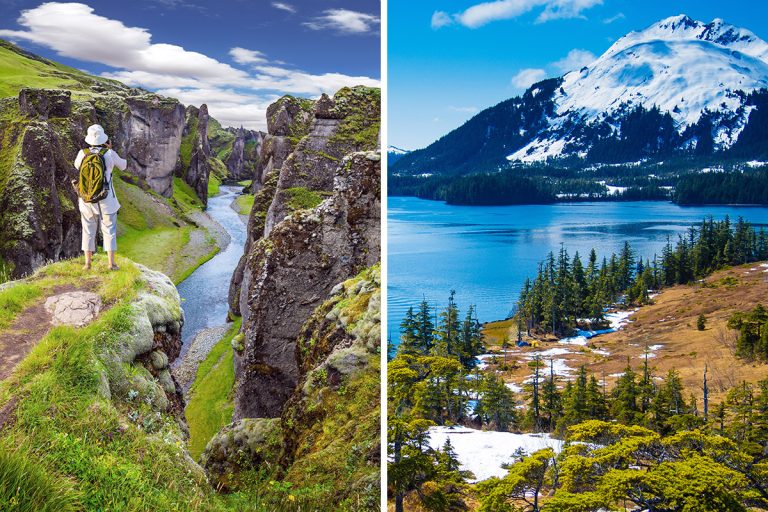
Table of Contents
Delving into the fascinating past and vibrant traditions of both destinations, you’ll be transported to a time of ancient sagas and age-old customs. From the Viking settlers of Iceland to the Native Alaskan tribes, every corner of these destinations tells a story. Ready to take this journey into the past? Read on, your adventure awaits.
History & Culture
Getting acquainted with the historical background and cultural nuances of Iceland and Alaska can help you appreciate the uniqueness of these places. It’s like opening a vibrant tapestry woven with stories of daring adventurers, intrepid settlers, and enduring indigenous cultures. Let’s uncover this tapestry.
In Iceland, history is deeply ingrained in the landscape, dating back to its settlement by the Vikings around the 9th century. The Icelandic sagas, epic tales of exploration, warfare, and heroism, are a testament to these early settlers’ resilience and spirit. This small island nation has a rich cultural heritage, with tradition and modernity interweaving seamlessly.
Literature and music play a significant role in Icelandic culture, while folklore, filled with tales of elves and trolls, has a charming presence.
On the other hand, Alaska has a unique history that is rooted in its native peoples. For thousands of years before the arrival of European explorers, the indigenous tribes of Alaska thrived, their lives intertwined with the harsh but beautiful environment.
The history of Alaska is a blend of native culture, Russian colonization, and American acquisition, each phase leaving its mark on the landscape and people. The rich indigenous cultures of the Aleut, Athabaskan, Inuit, Yupik, Tlingit, Haida, and Tsimshian continue to thrive, reflecting vibrant traditions, art, and storytelling.
In comparing Iceland and Alaska, it’s apparent that both destinations have a rich historical and cultural tapestry.
Where Iceland boasts a Viking heritage and a love for sagas, Alaska has a blend of cultures resulting from its indigenous roots and periods of colonization. Their cultures are distinct yet similar in the sense that both places have a deep connection with the land and the environment.
In summary, choosing between Iceland and Alaska isn’t just about the views. It’s about embracing the fascinating history and culture that permeate every corner of these stunning destinations. So, will it be the Viking tales of Iceland or the indigenous cultures of Alaska that call out to you? Only time will tell!
Attractions & Activities
When it comes to breathtaking attractions and exciting activities, both Iceland and Alaska offer an abundance of options. In both places, the vibrant landscapes set the stage for unforgettable experiences. Let’s dive into the unique offerings of each destination.
In Iceland, your adventures begin with majestic natural wonders. The Golden Circle route is a must-do, leading you to Thingvellir National Park, Gullfoss Waterfall, and Geysir Geothermal Area.
For a truly unique experience, venture inside Langjökull Glacier or take a boat tour in Jökulsárlón Glacier Lagoon. Don’t miss the opportunity to witness the Aurora Borealis, a natural light show that is sure to leave you spellbound.
As for activities, hiking is popular, with trails leading to scenic spots like Svartifoss waterfall or through Skaftafell Nature Reserve. Explore the natural beauty of the island on horseback or get a bird’s eye view with a helicopter tour. For those seeking a unique cultural experience, visiting the traditional turf houses or soaking in a geothermal pool are activities that you would enjoy.
Alaska, on the other hand, boasts towering mountains, sprawling forests, and incredible wildlife. Denali National Park, home to North America’s highest peak, Mt. Denali (20,310 feet or 6190.5 meters), offers hiking, wildlife viewing, and mountaineering opportunities.
The Kenai Fjords National Park is perfect for glacier and wildlife cruises, while the Northern Lights can also be viewed in the state’s interior and northern regions during winter.
In terms of activities, you can venture into the wilderness for bear watching or go whale watching in the southeast. A visit to historical towns like Skagway or an adventurous trip on the Alaska Railroad can add an exciting dimension to your Alaska experience.
To summarize, both Iceland and Alaska are havens for those who crave outdoor adventures and stunning natural attractions. Whether you are gazing at Iceland’s powerful waterfalls or admiring Alaska’s towering peaks, these destinations promise an unforgettable experience.
Eating, Drinking & Nightlife
From the delightful flavors of local cuisines to the vibrant night scenes, the dining and entertainment experiences in both Iceland and Alaska can leave lasting impressions on visitors. Each destination has unique culinary traditions and nightlife that reflect their culture and lifestyle.
In Iceland, the cuisine is deeply connected to its maritime roots. Traditional dishes like “harðfiskur” (dried fish) and “hákarl” (fermented shark) can be a real adventure for your taste buds. However, contemporary Icelandic dining also shines, with Reykjavik offering a range of sophisticated restaurants serving local ingredients in innovative ways.
When it comes to drinks, Icelanders have a fondness for their local beverages. From Brennivín, often referred to as “Black Death,” a type of schnapps, to a variety of craft beers from local breweries, there’s plenty to sample.
As for the nightlife, Reykjavik is known for its surprisingly lively scene. The compact city center is home to a number of clubs, bars, and live music venues. Keep in mind that things heat up late, with many locals starting their night out well past midnight.
On the other hand, Alaska’s food scene is characterized by its wild-caught seafood and game meats. From succulent king crab to smoked salmon and reindeer sausages, the local fare is a testament to its rich natural resources.
As for drinks, Alaskan craft beer is well-respected, with numerous breweries offering a wide selection of locally brewed ales, lagers, and stouts. Sipping on a glass of locally distilled spirits or enjoying a glass of birch syrup cocktail can be a memorable experience.
Nightlife in Alaska varies from city to city, but it tends to be more low-key compared to Iceland. Anchorage offers a variety of bars and clubs, while in smaller towns, the local bar can serve as the main social hub.
To summarize, whether it’s diving into traditional Icelandic fare and buzzing nightlife, or savoring Alaskan seafood and enjoying a laid-back evening, both destinations offer distinctive experiences that cater to a variety of tastes and preferences.
For those who enjoy hunting for unique finds and local treasures, the shopping scene in both Iceland and Alaska can be quite appealing. These destinations offer a wide range of local products and crafts that reflect their cultural heritage and natural resources.
In Iceland, the capital city of Reykjavik is a shopper’s delight. From Icelandic wool products like “lopapeysa” sweaters to beautiful handmade ceramics, there are many items that capture the essence of Icelandic culture and lifestyle. Also, don’t miss the chance to check out local music records or books by Icelandic authors.
On the other hand, Alaska offers an array of indigenous crafts and locally made goods. You can find intricately carved totem poles, handwoven baskets, and beaded jewelry that reflect the artistry of Alaska’s native tribes. In addition, gold nugget jewelry, wild berry products, and Alaskan smoked salmon are popular souvenirs.
In summary, both Iceland and Alaska offer a shopping experience that goes beyond the typical. You can discover unique cultural artifacts, local crafts, and products that are deeply intertwined with the land and its people. So, will it be the warm woolens of Iceland or the native crafts of Alaska that you’ll take home as souvenirs? Your shopping adventure awaits!
Accommodation
Accommodation is a crucial part of any travel plan, and both Iceland and Alaska offer a broad range of options, each with its unique charm. Let’s delve into the lodging scenes of these two adventurous destinations.
In Iceland, your choices range from modern city hotels in Reykjavik to charming rural guesthouses and farm stays across the country. Boutique hotels and luxury resorts offer spa treatments, gourmet meals, and stunning views of the surrounding landscapes. For more budget-friendly options, there are hostels and campsites, particularly popular among summer travelers.
On the other hand, Alaska provides diverse lodging experiences. Luxury resorts and lodges offer top-notch amenities, often with breathtaking views of mountains or water. Cabin rentals and bed-and-breakfast establishments provide a more intimate, homely feel. Additionally, for the more adventurous, camping in state and national parks brings you close to Alaska’s natural beauty.
In summary, whether you fancy a high-end resort, a cozy guesthouse, or a spot for camping under the stars, both Iceland and Alaska cater to every preference and budget. It’s all about what suits your comfort level and your idea of an ideal vacation base.
Family-Friendliness & Children’s Activities
Traveling with family is a joyous experience, and both Iceland and Alaska are ideal destinations for a family trip. With diverse activities for kids and a welcoming atmosphere, these places ensure a memorable family holiday.
In Iceland, families can explore the country’s stunning landscapes with child-friendly activities like hiking shorter trails, visiting animal farms, or exploring lava tubes. The geothermal pools are a hit with kids and the perfect place for the whole family to relax. Cultural centers and museums with interactive exhibits also provide educational fun for children.
Alaska is equally welcoming for families. Activities like wildlife viewing tours, dog sledding, and visiting places like the Alaska SeaLife Center or the Alaska Wildlife Conservation Center are great for children. The state’s numerous parks offer educational ranger-led programs, adding an enjoyable learning dimension to your child’s vacation.
In a nutshell, both Iceland and Alaska provide a family-friendly atmosphere with numerous activities to keep your little ones engaged and entertained. Whether it’s learning about Vikings in Iceland or getting up close with Alaskan wildlife, your family is sure to create lasting memories.
Getting There & Getting Around
Embarking on a journey to either Iceland or Alaska is an adventure in itself. How you reach these destinations and navigate through their spectacular landscapes can significantly impact your overall travel experience.
Reaching Iceland is fairly straightforward. Most travelers fly into Keflavík International Airport, which is about 31 miles (or 50 kilometers) from the capital, Reykjavik. Numerous airlines offer flights from many cities around the world.
In contrast, reaching Alaska can be a bit more complicated. It’s a large state, and where you land depends on your itinerary. Anchorage, the largest city, has the busiest airport. However, there are also smaller airports in towns like Juneau and Fairbanks. Some travelers even opt to arrive by sea on a cruise ship!
Once in Iceland, the easiest way to get around is by renting a car. The country’s main road, Route 1, circumnavigates the island, making it simple to explore. Bus service is also available, but it can be limited, especially in remote areas.
Getting around Alaska involves a mix of driving, flying, and sometimes even boating! Car rentals are available in major cities, and the Alaska Highway offers an epic road trip. However, given the state’s size, you might need to take internal flights or ferries to reach certain places.
In conclusion, whether you’re planning to chase waterfalls in Iceland or witness the grandeur of Alaskan wildlife, understanding your transport options is key. Whether by land, air, or sea, the journey is all part of the adventure.
Weather often plays a big role in shaping your travel experience. Both Iceland and Alaska, located in the northern extremes, provide a unique climate perspective that you’ll want to consider when planning your trip.
Iceland, despite its name, has milder weather than you might expect. The Gulf Stream warms the island, leading to relatively mild winters and cool summers. Average winter temperatures hover around freezing, 32°F (0°C), while summer temperatures reach averages of about 55°F (13°C).
The best time to visit is from June to August, when the weather is the warmest and the famous midnight sun occurs.
On the other hand, Alaska’s weather varies widely depending on the region. Coastal areas have milder winters and cooler summers compared to the interior. Winter temperatures can plunge as low as -20°F (-29°C) in the interior, while coastal areas stay around 20°F (-6°C). In summer, temperatures range from 60°F (16°C) in coastal areas to 80°F (27°C) in the interior.
The most popular time to visit is during the summer months from June to August.
In conclusion, both Iceland and Alaska offer unique weather experiences. Whether you want to enjoy the midnight sun in Iceland’s mild summer or marvel at Alaska’s more extreme temperature range, understanding their climates will help you plan for the adventure of a lifetime.
Safety is paramount when traveling. Rest assured, both Iceland and Alaska are considered safe destinations, each with their unique safety considerations.
Iceland is regularly ranked as one of the safest countries in the world. Violent crime is rare, and incidents involving tourists are uncommon. However, the country’s rugged terrain and unpredictable weather can pose risks. Always follow weather forecasts and hiking advisories to ensure your safety.
In Alaska, crime rates vary by region, but generally, it’s a safe place for tourists. Like Iceland, the main safety concerns are related to the great outdoors. Wildlife encounters, particularly with bears and moose, can pose dangers. Always respect wildlife guidelines, keep a safe distance, and store food properly.
One unique aspect of safety in these destinations is the potential for seismic activity. Both Iceland and Alaska are on active tectonic plates, meaning there’s a potential for earthquakes or volcanic activity. Though these events are typically rare and monitored closely, it’s always good to be aware and heed any official advisories.
To sum up, while both destinations are generally safe, being aware of environmental factors is key. With a little caution and respect for the great outdoors, you’re set for a safe and memorable trip.
Understanding the cost is an important part of planning your travel. While both Iceland and Alaska offer experiences of a lifetime, their costs can vary.
Iceland is known for being on the pricier side. Accommodation, eating out, and popular activities like glacier tours or whale watching can add up. For instance, a meal at an inexpensive restaurant might set you back around 2,500 ISK or $20.
On the contrary, Alaska can be a bit more budget-friendly, though it still isn’t cheap. Costs can vary widely depending on your choices of accommodation, dining, and activities. A similar meal might cost around $15.
Transportation can also factor into your budget. Car rentals in both destinations can be quite high, and gas prices in Iceland can be steep. In Alaska, you may have to factor in costs for ferry rides or internal flights due to its vast size.
In summary, while both destinations offer priceless experiences, they do come with their own price tags. Being aware of potential costs in Iceland and Alaska can help you plan a trip that fits your budget and still delivers on adventure and beauty.
Which Is Better – Iceland or Alaska?
When it comes to choosing between Iceland and Alaska, your decision ultimately comes down to what you value most in your travel experience. Both offer unique histories, breathtaking landscapes, and unforgettable activities, albeit with some differences.
In terms of history and culture, you might lean toward Iceland for its rich Norse heritage and unique cultural traditions like the winter “Yule Lads” celebration. On the other hand, Alaska’s indigenous history and living traditions offer a compelling narrative that weaves together both past and present.
When you consider attractions and activities, it really depends on what kind of adventurer you are. If you’re drawn to the ethereal beauty of the northern lights, hiking across glaciers, or watching a geyser erupt, Iceland is for you. Alaska, however, calls to those who dream of fishing in pristine rivers, exploring massive national parks, or even dog sledding.
Beach lovers might find both destinations less traditional. Iceland’s black sand beaches are a sight to behold, but you might be more inclined to enjoy Alaska’s rugged, rocky coastline if you’re into dramatic seascapes.
Foodies and nightlife enthusiasts might enjoy both destinations. Iceland offers a unique cuisine based on its Viking roots, while Alaska’s seafood scene is hard to beat. In terms of nightlife, both destinations offer unique experiences, whether it’s a cozy pub in Reykjavik or a rustic lodge in Anchorage.
When it comes to shopping, Iceland’s Reykjavik is a wonderland of creative boutiques and art studios, while Alaska offers plenty of opportunities to find locally made crafts and indigenous art.
As for accommodation, both destinations offer a range of options, from luxury hotels to cozy cabins. Family-friendly activities abound in both places, too, whether it’s exploring geysers and waterfalls in Iceland or spotting wildlife and fishing in Alaska.
Navigating around both Iceland and Alaska presents unique challenges and adventures. Whether you choose to drive around Iceland’s Ring Road or navigate Alaska’s vast wilderness by plane or ferry, it’s all part of the journey.
Weather-wise, you’ll need to be prepared for cooler temperatures in both places. While both are safe destinations, it’s essential to be aware of the unique environmental factors in each.
Finally, in terms of cost, you’ll find that Iceland tends to be pricier while Alaska can be more budget-friendly. However, both offer priceless experiences that are well worth any cost.
In conclusion, whether you choose the ethereal beauty of Iceland or the vast wilderness of Alaska, you’re bound to have an unforgettable adventure. The choice ultimately depends on your personal preferences and what kind of journey you’re longing to embark on. So, where will your next adventure be – Iceland or Alaska?
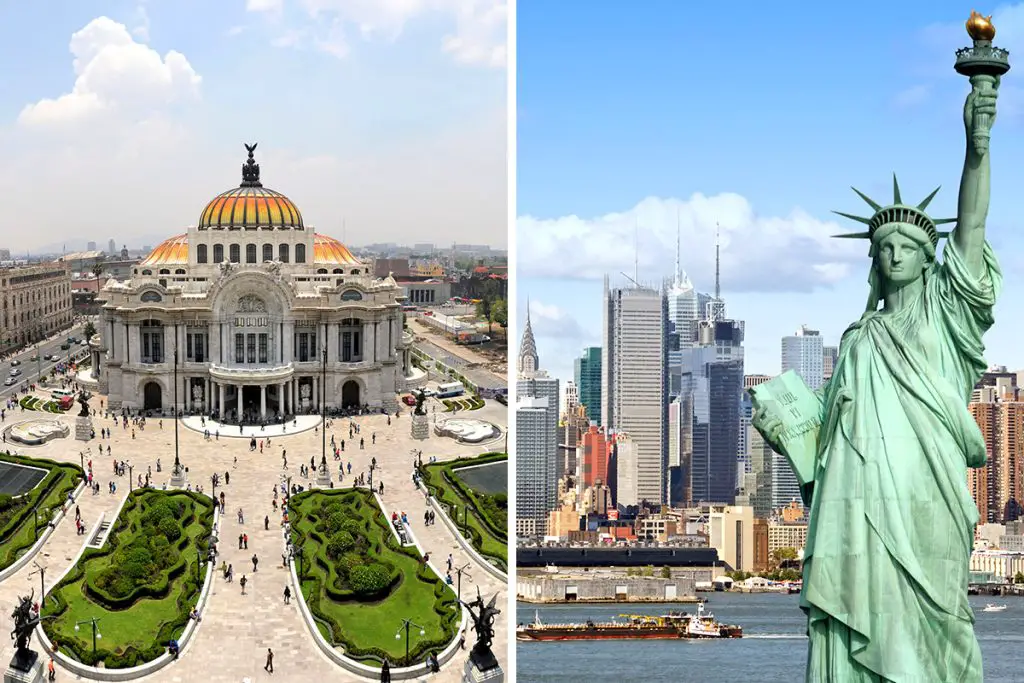
About | Contact | Privacy Policy
Copyright © Loco Media
Help me decide, Alaska or Iceland and why?
Planning a trip to alaska , add places from guides with 1 click, collaborate with friends in real time, import flight and hotel reservations, expense tracking and splitting, checklists for anything, get personalized suggestions.
- Afghanistan
- Aland Islands
- American Samoa
- Bosnia and Herzegovina
- Burkina Faso
- Cayman Islands
- Central African Republic
- Democratic Republic of the Congo
- Dominican Republic
- El Salvador
- Faroe Islands
- French Guiana
- French Polynesia
- French Southern Territories
- Guinea-Bissau
- Isle of Man
- Ivory Coast
- Liechtenstein
- Marshall Islands
- Netherlands
- New Zealand
- North Korea
- North Macedonia
- Northern Mariana Islands
- Palestinian Territory
- Philippines
- Puerto Rico
- Republic of the Congo
- Saudi Arabia
- Solomon Islands
- South Africa
- South Korea
- Svalbard and Jan Mayen
- Switzerland
- Trinidad and Tobago
- Turkmenistan
- U.S. Virgin Islands
- United Arab Emirates
- United Kingdom
- United States
- Wallis and Futuna
Comparing Iceland with Alaska, United States
Compare climate information for iceland and alaska, united states, is iceland warmer or hotter than alaska, united states.
On average across the year, yes, Iceland is hotter than Alaska, United States . Iceland has an average temperature of 5°C/41°F and Alaska, United States has an average temperature of 3°C/37°F. Iceland's hottest month is August, with an average maximum temperature of 14°C/57°F, which is not hotter than Alaska, United States's hottest month (July, with an average maximum temperature of 19°C/66°F).
Average Monthly Maximum Temperatures
Is iceland colder or cooler than alaska, united states.
On average across the year, no, Iceland is not colder than Alaska, United States . Iceland has an average minimum temperature of 3°C/37°F and Alaska, United States has an average minimum temperature of -1°C/30°F.
Average Monthly Minimum Temperatures
Compare location information for iceland and alaska, united states, how far is iceland from alaska, united states.
The midpoint of Iceland is approximately 3,170 miles (5,102km) east of Alaska, United States .
Is Iceland further west than Alaska, United States?
No, Iceland is not further west than Alaska, United States.
Is Iceland further east than Alaska, United States?
Yes, Iceland is further east than Alaska, United States. The midpoint of Iceland is further east by approximately 3,765 miles (6,059km).
Is Iceland further north than Alaska, United States?
Yes, Iceland is further north than Alaska, United States. The midpoint of Iceland is further north by approximately 53 miles (85km).
Is Iceland further south than Alaska, United States?
No, Iceland is not further south than Alaska, United States.
Is Iceland bigger than Alaska, United States?
No, Iceland is smaller than Alaska. Iceland has an area of 100,250 km 2 (259,648 miles 2 ) and Alaska has an area of 1,723,337 km 2 (4,463,443 miles 2 ) which means that Iceland is 1,623,087 km 2 (4,203,795 miles 2 ) smaller than Alaska. That makes Iceland 17 times smaller than Alaska.
Is Iceland smaller than Alaska, United States?
Yes, Iceland is smaller than Alaska. Iceland has an area of 100,250 km 2 (259,648 miles 2 ) and Alaska has an area of 1,723,337 km 2 (4,463,443 miles 2 ) which means that Iceland is 1,623,087 km 2 (4,203,795 miles 2 ) smaller than Alaska. That makes Iceland 17 times smaller than Alaska.
How far is Alaska, United States from Iceland?
The midpoint of Alaska, United States is approximately 3,170 miles (5,102km) west of Iceland .
Is Alaska, United States further west than Iceland?
Yes, Alaska, United States is further west than Iceland. The midpoint of Alaska, United States is further west by approximately 3,765 miles (6,059km).
Is Alaska, United States further east than Iceland?
No, Alaska, United States is not further east than Iceland.
Is Alaska, United States further north than Iceland?
No, Alaska, United States is not further north than Iceland.
Is Alaska, United States further south than Iceland?
Yes, Alaska, United States is further south than Iceland. The midpoint of Alaska, United States is further south by approximately 53 miles (85km).
Is Alaska, United States bigger than Iceland?
Yes, Alaska is bigger than Iceland. Alaska has an area of 1,723,337 km 2 (4,463,443 miles 2 ) and Iceland has an area of 100,250 km 2 (259,648 miles 2 ) which means that Alaska is 1,623,087 km 2 (4,203,795 miles 2 ) bigger than Iceland. That makes Alaska 17 times bigger than Iceland.
Is Alaska, United States smaller than Iceland?
No, Alaska is not smaller than Iceland. Alaska has an area of 1,723,337 km 2 (4,463,443 miles 2 ) and Iceland has an area of 100,250 km 2 (259,648 miles 2 ) which means that Alaska is 1,623,087 km 2 (4,203,795 miles 2 ) bigger than Iceland. That makes Alaska 17 times bigger than Iceland.
Compare population information for Iceland and Alaska, United States
Is iceland more populated than alaska, united states.
No, Iceland is not more populated than Alaska. Iceland has a population of 357,603 and Alaska has a population of 732,673 which means that Iceland has 375,070 fewer people than Alaska. That makes Iceland 2 times less populated than Alaska.
Is Iceland less populated than Alaska, United States?
Yes, Iceland is less populated than Alaska. Iceland has a population of 357,603 and Alaska has a population of 732,673 which means that Iceland has 375,070 fewer people than Alaska. That makes Iceland 2 times less populated than Alaska.
Is Alaska, United States more populated than Iceland?
Yes, Alaska is more populated than Iceland. Alaska has a population of 732,673 and Iceland has a population of 357,603 which means that Alaska has 375,070 more people than Iceland. That makes Alaska 2 times more populated than Iceland.
Is Alaska, United States less populated than Iceland?
No, Alaska is not less populated than Iceland. Alaska has a population of 732,673 and Iceland has a population of 357,603 which means that Alaska has 375,070 more people than Iceland. That makes Alaska 2 times more populated than Iceland.
Compare Iceland with other countries
Info for other countries.

Iceland and Greenland - What's the Difference Between the Countries?

The Settlement of Iceland and Greenland
What happened to the norse settlement in greenland, the names of iceland and greenland, why is iceland called iceland, why is greenland called greenland, iceland, greenland, and denmark, iceland vs. greenland - comparing the two countries, language and population - iceland vs. greenland, political status - iceland vs. greenland, weather & climate - iceland vs. greenland, nature & wildlife - iceland vs. greenland, iceland vs. greenland - which country to visit, costs and accessibility - iceland vs. greenland, natural wonders - iceland vs. greenland.
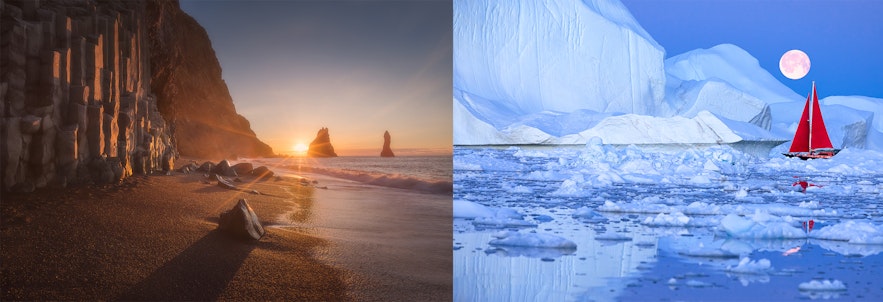
Located in the North Atlantic, Iceland and Greenland are neighboring countries that often draw attention on the world map due to their somewhat similar sounding names. At a glance, these names might seem a bit strange, suggesting landscapes opposite to their realities. The truth, however, is rooted in an interesting bit of shared history.
Iceland, situated on the Mid-Atlantic Ridge , is famous for its geothermal activity and volcanic landscapes. Booking a hotel in Iceland and exploring the country's wondrous landscapes on some of the many nature tours available is an unbelievable experience.
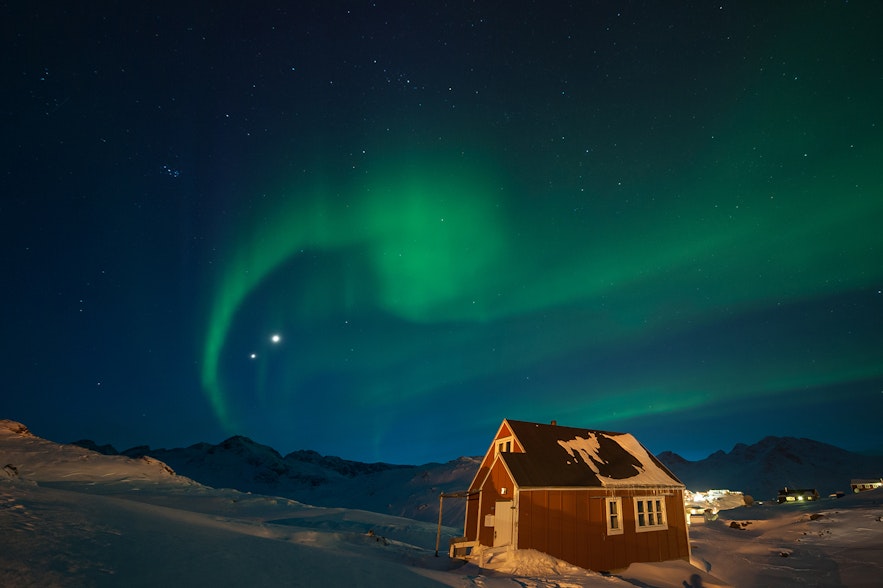
The northern lights in Greenland.
Greenland, primarily covered by an expansive ice sheet, holds the distinction of being the world's largest island. With colossal icebergs and a rich Inuit heritage, Greenland is a harsh but beautiful Arctic wonderland.
But what are the similarities and differences between the two countries? Renting a car in Iceland and driving the Ring Road is a great way to explore everything the country has to offer, but why is the same not possible in Greenland? Do the inhabitants of Iceland and Greenland have a shared ancestry or intertwined histories?
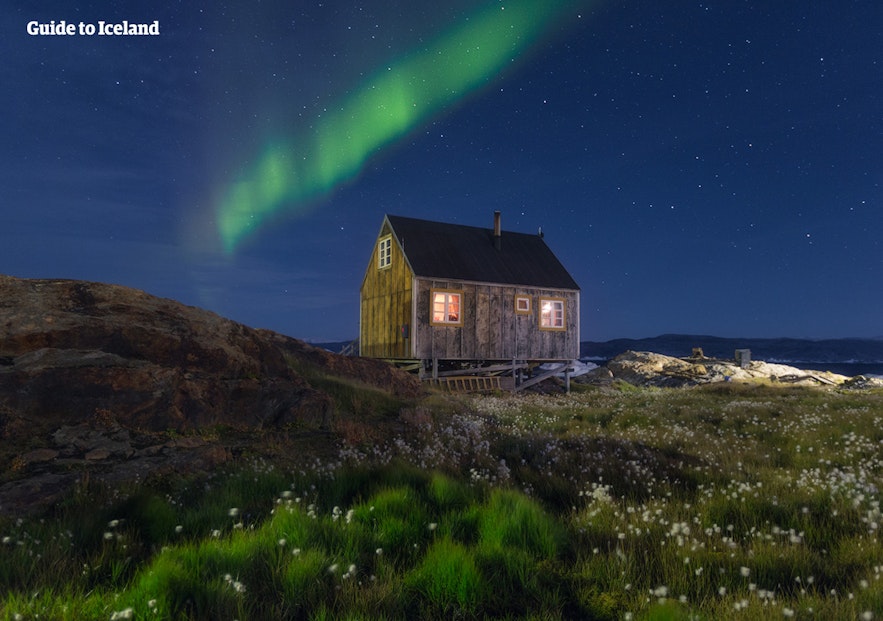
The northern lights in Iceland.
In this article, we'll explore the nature, culture, and history of Iceland and Greenland. We'll go into the things they have in common and the things that separate them, as well as the reasoning behind the names of the countries that still manage to confuse some. Whether you're thinking about exploring Iceland on a fascinating self-drive tour or visiting the ruins of the vanished Norse settlement in Greenland, here's everything you need to know before visiting.
If you're visiting Iceland, you can book a full vacation with a short stop at Greenland included, such as this spectacular 8-day summer vacation in Iceland with a guided day tour to Greenland . There are many more amazing Iceland and Greenland vacation packages to explore that will allow you to visit both countries in one trip if you just can't choose between them, so let's dig in!
- See also: The Complete History of Iceland
- See also: Where is Iceland?
Top Iceland & Greenland Packages
5 day summer package | golden circle, south of iceland with a greenland day tour, epic 10 day greenland sailing trip & photography workshop with transfer from reykjavik.
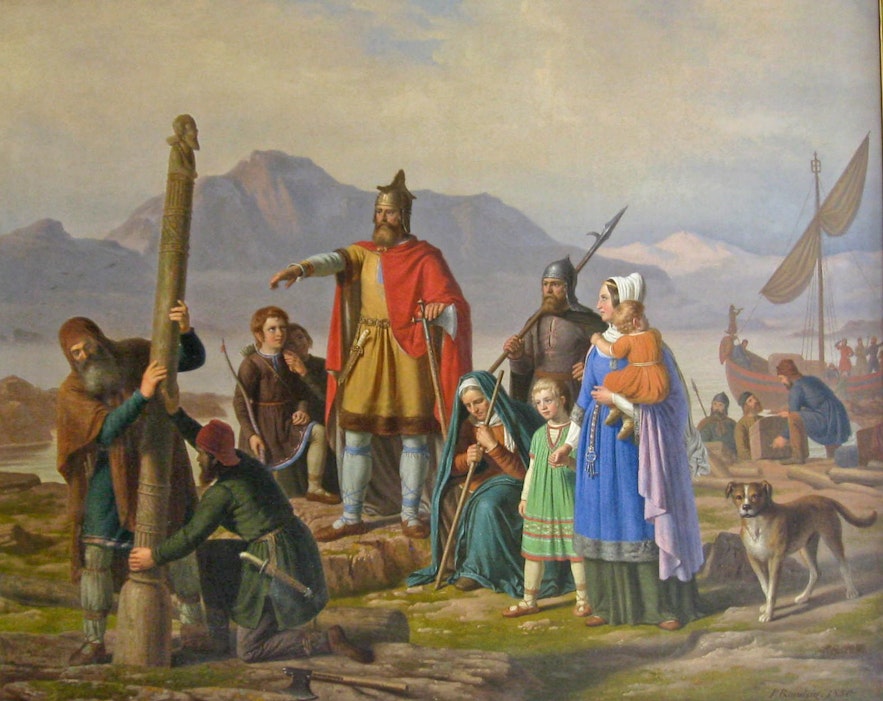
Ingolfur Arnarson settling in Reykjavik.
The settlement histories of Iceland and Greenland are intertwined. While Greenland had previously been inhabited by the Inuit people, both Iceland and Greenland were unknown to mainland Europeans for a long time. Classical and medieval manuscripts spoke of a mystical island far in the north called Thule, but it wasn't until the late 9th century that Iceland was first discovered by Norse explorers.
One of the first men to discover Iceland was Floki Vilgerdarson, often called "Raven Floki," as he employed the use of ravens to aid him in the search for the island. Floki experienced a harsh winter in Iceland which made him decide against settling there, but before leaving, he did have the honor of naming it Iceland after observing ice drifting in the fjords.
- See also: Vikings and Norse Gods in Iceland
The Norwegian-born explorer Ingolfur Arnarson is most often credited as Iceland's first permanent settler. In 874 AD, he made his home in the place now known as Reykjavik, the capital of Iceland.

A replica of the Erik's homestead in Iceland.
Many of the people who would settle in Iceland in the next century hailed from Norway, one of which was Erik the Red. His father, Thorvald Asvaldsson, was exiled from Norway after violent disputes, and as a result, the family moved to Iceland. As Erik grew up, he followed in his father's violent footsteps and also became involved in some bloody disputes, which led to his exile from Iceland circa 982 AD. Eiriksstadir , the likely site of Erik's homestead, today features a replica of a Viking longhouse.
During his exile, Erik sailed westward to a land that was known but unexplored by Norsemen. He spent three years surveying this land and gave it the name Greenland. This may seem odd, as Greenland is largely covered with ice, but there are areas of green along the island's coasts, including the area where Erik settled down.
After his period of exile ended, Erik returned to Iceland around 985 or 986 AD. He brought tales of "Greenland" and encouraged people to join him in settling the new land. Many were convinced, and they embarked on a journey to Greenland with Erik leading them. One of the people who accompanied Erik to Greenland was his son, Leif Erikson, who would later become the first European to set foot on continental North America.
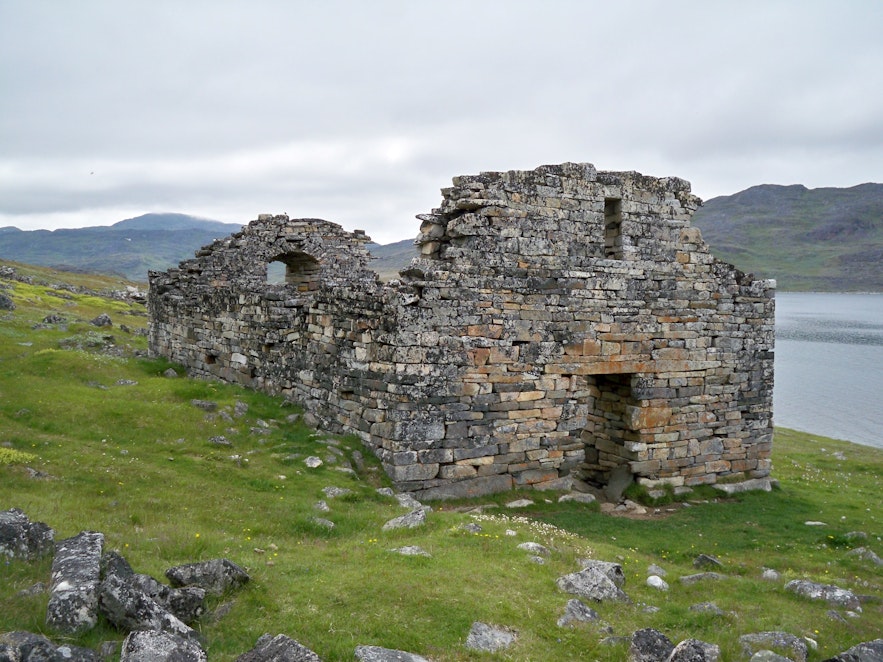
Ruins from the Norse settlement in Greenland. Image from Wikimedia, Creative Commons, by Number 57 .
The Norse settlement established by Erik the Red remained in Greenland for a few centuries before vanishing in the 15th century. The reasons behind the decline and eventual disappearance of the colony remain a mystery to this day, but several factors have likely contributed.
The Norse established their settlement in Greenland during what is called the Medieval Warm Period (circa 950-1250 AD), a time when temperatures were relatively mild. At this time, Greenland's climate supported agriculture and livestock farming. Around the mid-14th century, however, the climate began to cool during the Little Ice Age. This change led to shorter growing seasons and harsher winters, which would have made farming and livestock management increasingly challenging.
Some experts believe the Norse people abandoned the settlement, while others believe they simply perished. Another theory suggests that the population was abducted by raiders. No matter the cause, it is unlikely that a single factor was responsible for the disappearance of the settlement.
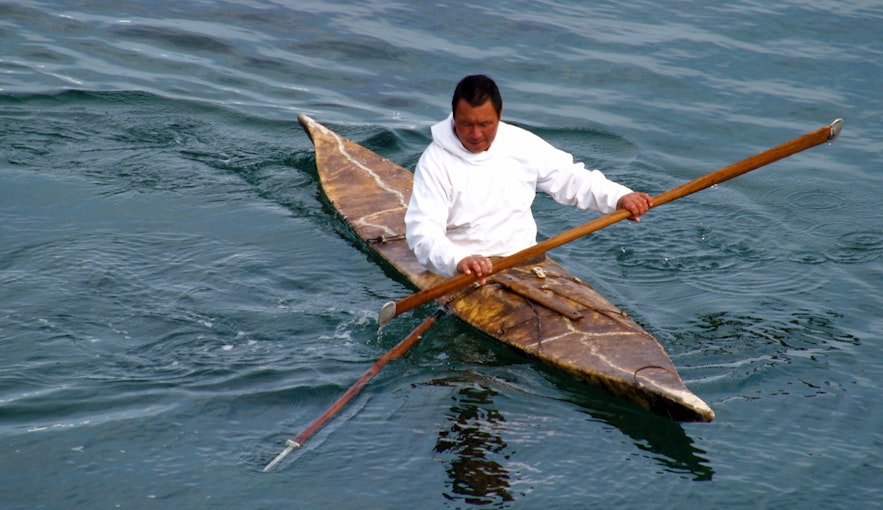
A traditional Greenlandic kayak. Image from Wikimedia, Creative Commons, by wili hybrid .
The current Greenlandic population is descended from the Thule people, an Inuit culture that migrated from what is now known as Alaska around 1000 AD, reaching Greenland around 1300 AD. The Thule were highly adaptable to the Arctic environment, with technological innovations such as dog sleds, toggling harpoons, and kayaks for hunting and whaling.
While the Thule did move into Greenland after the Norse had established settlements, there was limited evidence of significant direct contact between the two groups. It's believed that any interactions would have been primarily in the form of trade.
Top Adventure Tours in Iceland
Best ice cave tour in vatnajokull glacier starting from jokulsarlon glacier lagoon, inside the volcano thrihnukagigur tour with transfer from reykjavik, small group tour of snaefellsnes national park with transfer from reykjavik.
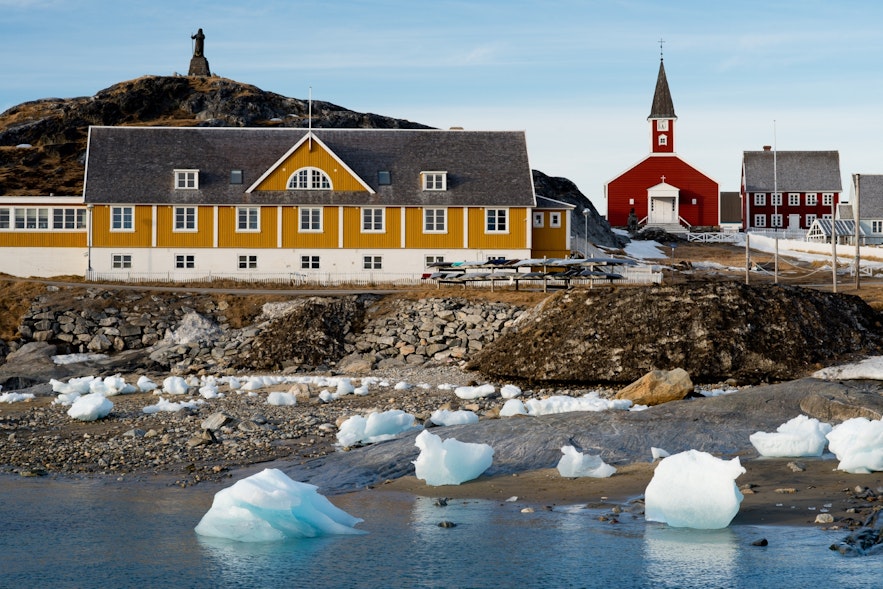
Nuuk, Greenland. Image from Wikimedia, Creative Commons, by Thomas Leth-Olsen .
Ever heard the phrase "Iceland is green and Greenland is ice?" A common myth surrounding the naming of Greenland and Iceland is that the Vikings gave Iceland its name to keep people from wanting to settle there and gave Greenland its name to lure people there instead. The legend says that the names should, in fact, have been reversed, as Iceland is greener than Greenland, and Greenland has more ice than Iceland. While it's a cute little conspiracy theory, the truth is simpler.
Before Iceland got its name, Gardar Svavarsson, an explorer who stopped there briefly but didn't settle down, gave it the name Gardarsholmi (Gardar's Island). Thankfully, the name didn't stick. When Raven-Floki gave Iceland its current name, he was disgruntled after a rough winter on the new island he had found. He gave Iceland its name due to drifting ice drifting in the fjords, which
The site where Erik the Red settled down was likely green at the time, as Greenland's coasts are in the summer. There might, however, be some truth in that he gave it such an inviting name in order to lure more settlers in.
The modern inhabitants of Greenland do not refer to the country by that name, but they rather call it "Kalaallit Nunaat," which in the Greenlandic language (Kalaallisut) means "Land of the Kalaallit." Kalaallit is the term for the Greenlandic Inuit, the indigenous people of Greenland.
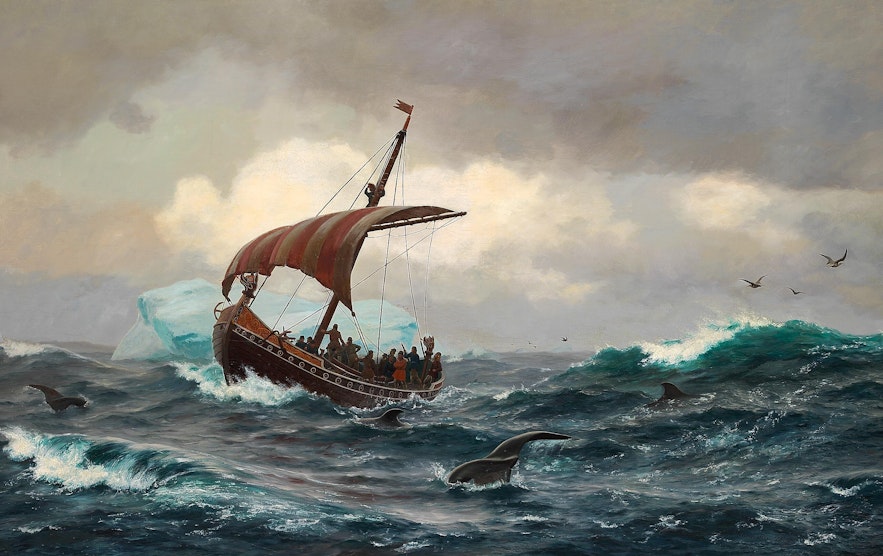
By the mid-13th century, internal strife and external pressures weakened Iceland's independent commonwealth system. The last quarter of the 13th century saw the signing of the Old Covenant in 1262-1264, which brought Iceland under the Norwegian crown. This was partly in exchange for benefits such as protection and trade rights. The Norse settlement in Greenland, likewise, also became a part of the Kingdom of Norway in the 13th century.
In 1397, the kingdoms of Norway, Denmark, and Sweden all unified under a single monarch. Though the union had periods of disruption, Iceland and Greenland, territories originally associated with Norway, came under this joint crown and became a part of Denmark. When the union would later dissolve, Iceland and Greenland remained Danish territories.
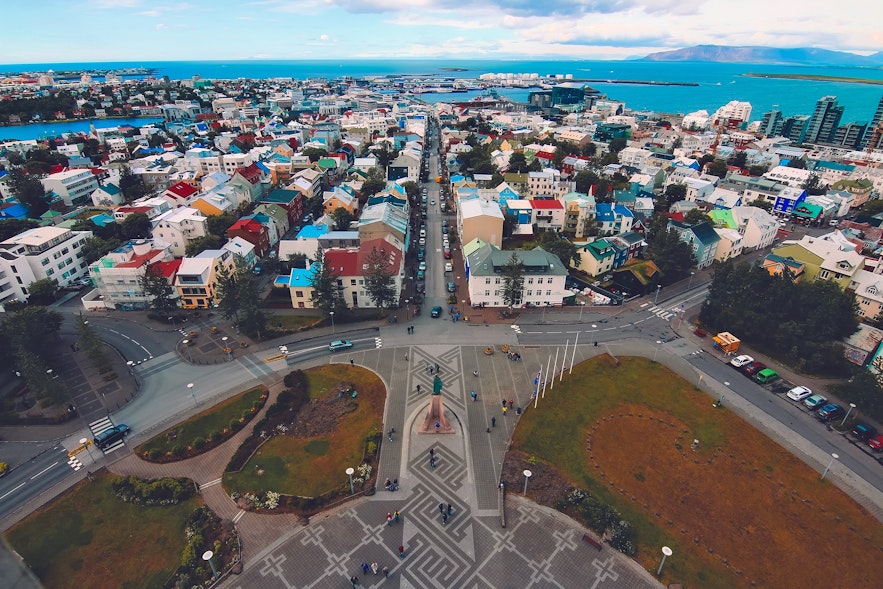
Reykjavik, Iceland.
In the 19th century, Icelandic nationalism was on the rise, with increasing demands for self-governance. In 1874, Denmark granted Iceland a constitution, and in 1904, Iceland acquired its first minister resident in Iceland. Iceland became a sovereign state in 1918 under a common monarch with Denmark and would later become fully independent in 1944.
Greenland, conversely, remains a Danish territory to this day. In the 20th century, especially after World War II, there was increased emphasis on modernizing Greenland and integrating it more closely with Denmark. In 1979, Greenland was granted Home Rule, giving it control over most internal matters while defense and foreign policy remained under Danish jurisdiction. In 2009, this arrangement was expanded with the Self-Rule Act, granting Greenland even more powers.
Top Dog Sledding Tours
Incredible 2 hour siberian husky dog sled sightseeing tour by the myvatn area, visit a dog sled kennel on an icelandic farm | lake myvatn area, thrilling 1.5 hour siberian husky dog cart tour in the lake myvatn area.
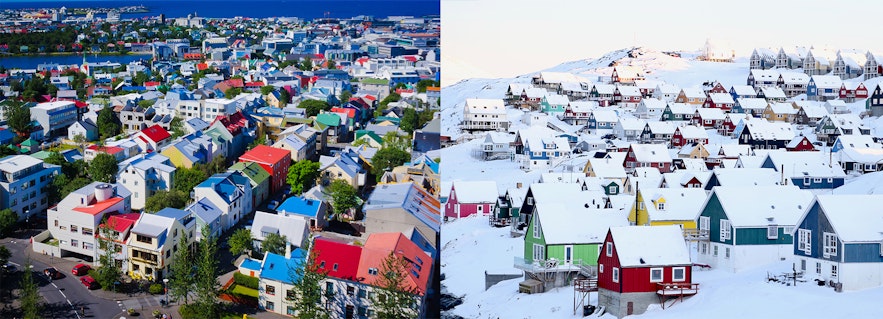
Relations between Iceland and Greenland, both political and economic, have strengthened a lot in recent years. as can be seen in the decision of the Icelandic government to open an embassy in Greenland in 2013 and of the Greenlandic government to open an embassy in Iceland in 2018.
Here are some comparisons between the two countries:

Conversely, the population of Greenland is significantly lower than Iceland's, at around 57,000. The official language of Greenland is Kalaallisut, an Eskealeut language, often called Greenlandic. It is closely related to Inuit languages in Canada, such as Inuktitut. Before 2009, the official language in Greenland used to be Danish, before the government decided to change it to strengthen the position of the Greenlandic heritage.

Conversely, Greenland is an autonomous territory within the Kingdom of Denmark. Greenland has a significant degree of self-rule, but certain areas, especially foreign affairs, and defense, are handled by Denmark. There have been discussions and debates about full independence for Greenland. The 2009 self-rule act includes provisions that could pave the way for Greenland's eventual independence from Denmark if the Greenlandic people choose that path in the future.
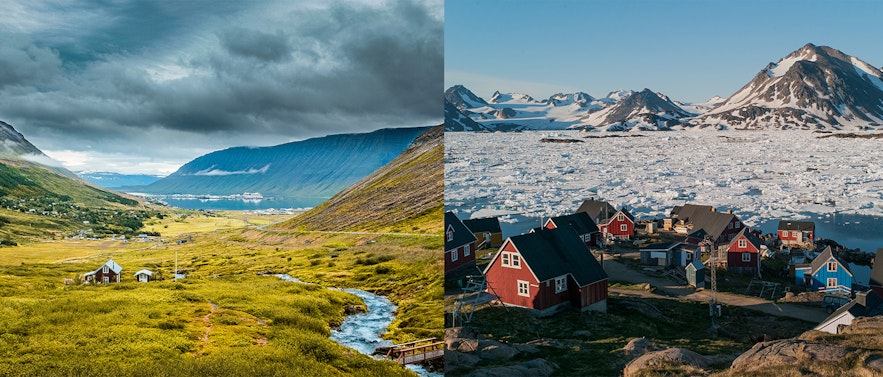
Greenland's vast size means it encompasses several climate zones. During summer, the coastal areas of Greenland can have summer temperatures ranging from 41°F to 50°F (5°C to 10°C), but in the winter, they drop significantly, often plunging well below freezing. The interior areas remain extremely cold year-round.

Iceland's only native mammal is the Arctic fox, with newcomers such as reindeer and minks having been introduced in recent centuries. Greenland, on the other hand, is home to magnificent animals such as musk oxen and polar bears. Both countries have rich birdlife, especially during the summer when many birds migrate to the islands for mating and nesting.
- See also: Wildlife and Animals in Iceland

A common question when Iceland and Greenland comes up, is which country is better to visit. Choosing between the two countries largely depends on what kind of experience you are seeking because while both countries offer stunning landscapes and unique cultural experiences, they are quite different in many respects.
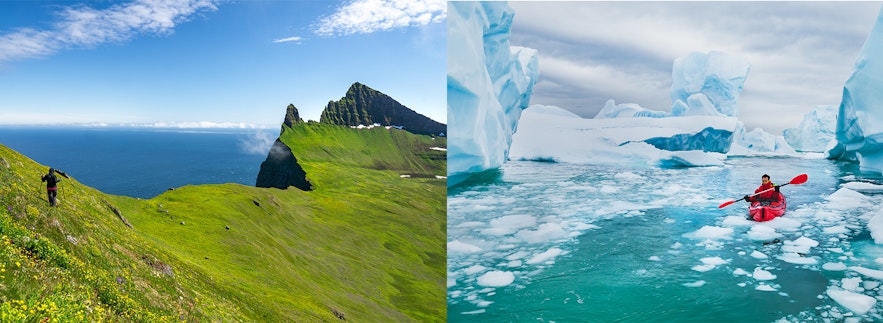
Traveling in both countries can be relatively expensive, but Greenland often has higher costs due to its remote location. Iceland has a well-developed tourism infrastructure when it comes to accommodations, tours, restaurants, and roads. The infrastructure in Greenland is more limited, and the country does not have a national road system connecting its towns and settlements.
Iceland is also more accessible, offering multiple international flights daily from Europe and North America. In contrast, flights to Greenland are less frequent, harder to come by, and generally quite a bit pricier.
English is widely spoken in Iceland. You can expect most locals, especially the younger generations, to have a near-native proficiency. While some Greenlanders speak good English, their proficiency might not be as high as in Iceland. In the larger towns and especially around the tourism industry, you can expect a good level of English understanding in Greenland.

Top Snowmobile Tours
Golden circle & snowmobiling tour with transfer from reykjavik, snowmobile tour on langjokull glacier with transfer from gullfoss waterfall, thrilling 3 hour super jeep tour with glacier snowmobiling on vatnajokull.
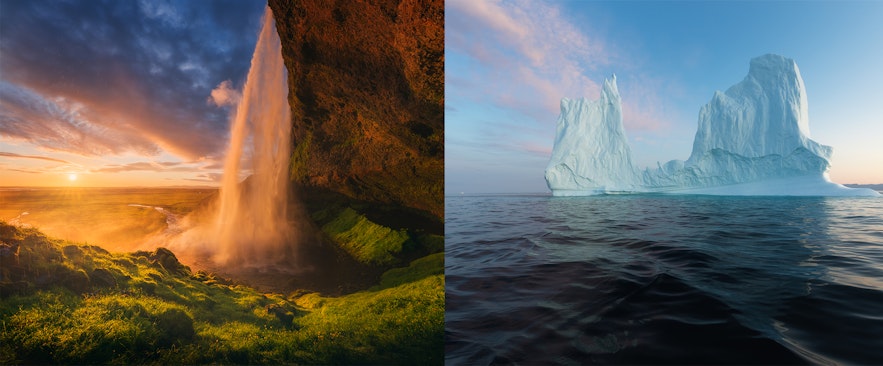
When visiting Iceland, there are many fantastic guided tours of Icelandic nature you can embark on to see some of the wonders the country has to offer. If you really want the full experience of what Iceland has to offer, you might want to consider a 10-day self-drive tour of the complete Ring Road of Iceland , which will take you around the entire island.
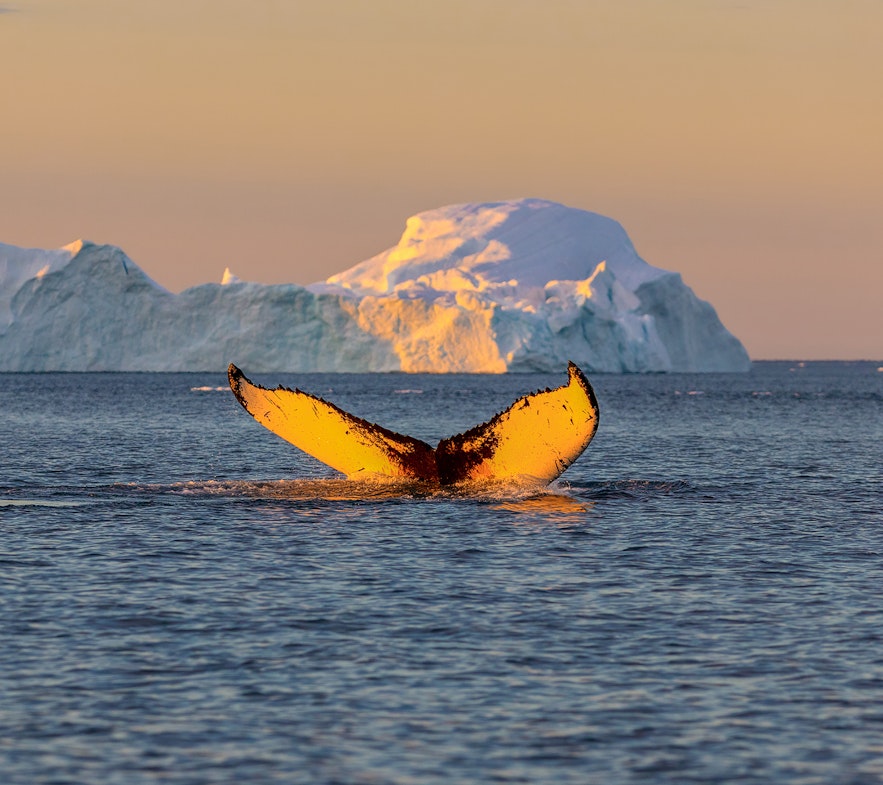
A whale swimming in a fjord near Illulisat, Greenland.
Greenland also has plentiful natural wonders. Taking a boat trip to the mouth of the Ilulissat Icefjord and witnessing the enormous icebergs is a stunning experience, as is soaking in the Uunartoq Hot Springs. Going dog sledding over the frozen landscape or kayaking in the Arctic waters is a great way of getting to know Greenland's Inuit heritage while taking in the breathtaking scenery.
If you want to create unforgettable memories while visiting Greenland, you can book a Greenland photography tour with Iceland Photo Tours is an excellent way of doing just that. Founded by the renowned landscape photographer Iurie Belegurschi, Iceland Photo Tours puts you in the hands of expert photographers who ensure you will have a truly immersive experience while exploring stunning landscapes.
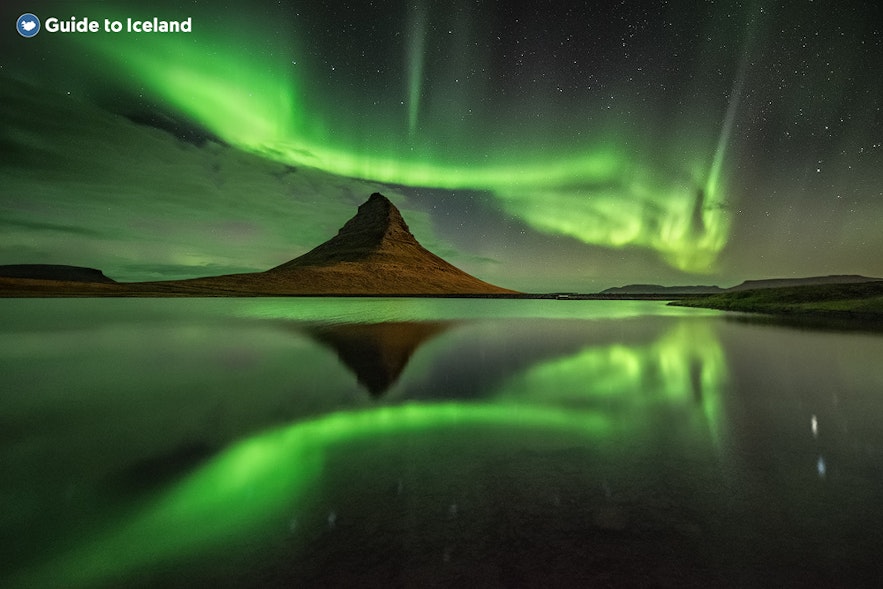
Mount Kirkjufell in Iceland.
If you want to see the northern lights , both Iceland and Greenland are great locations for visitors who want to see this amazing natural phenomenon. No matter which country you choose, make sure you go during the winter months if you're hunting for the aurora borealis, as the northern lights are not visible in the summer due to the midnight sun.
In conclusion, Iceland and Greenland are both fantastic travel destinations in their own right, with charming atmospheres, strong cultural heritage, and majestic landscapes. Visiting Iceland will be more accessible and less costly, but the experience of visiting Greenland might offer a rugged experience, with fewer tourists, that might appeal to some.
That concludes our comparison between Iceland and Greenland. Would you like to visit Iceland, Greenland, or possibly both? If you have, what was your experience? Let us know in the comments below!
Popular articles

Guide to Iceland | The Story of the Leading Travel Agency of Iceland

The Complete Guide to the Midnight Sun in Iceland

Top 20 Most Beautiful Waterfalls in Iceland

22 Photos of the Aurora in Iceland

Mountains in Iceland
Other interesting articles.
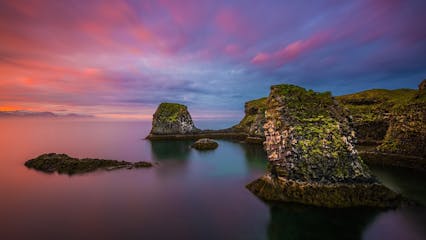
Top 16 Things to Do on the Snaefellsnes Peninsula
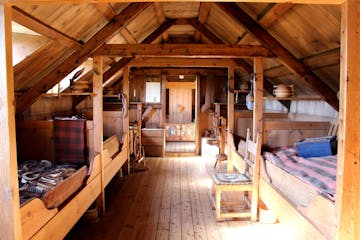
The Best Museums in Iceland
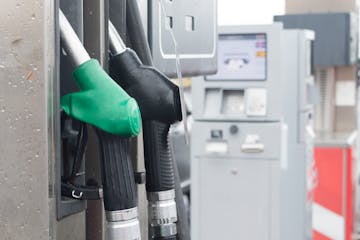
Gas Stations in Iceland: The Ultimate Guide

Download Iceland’s biggest travel marketplace to your phone to manage your entire trip in one place
Scan this QR code with your phone camera and press the link that appears to add Iceland’s biggest travel marketplace into your pocket. Enter your phone number or email address to receive an SMS or email with the download link.
Top things to do in Iceland
Book your complete trip with the best companies only

Explore an Ice Cave

Visit a Live Volcano

Find the Northern Lights

Visit the Blue Lagoon

Go on a Road Trip

Do the Golden Circle

See the Glacier Lagoon

South Coast Tours
3 ways to fly Icelandair using points and miles

Editor's Note
Update: Some offers mentioned below are no longer available. View the current offers here .
Iceland has become one of the world's most popular tourist destinations, and for good reason. Whether your interests lie in cultural activities, relaxing in hot springs, watching the Northern Lights, spotting wildlife or hiking through some of the world's most picturesque trails, the island nation has you covered.
Better yet, Iceland has had a very successful reopening to tourists. It opened to vaccinated tourists from select countries — including the U.S. — earlier this year, and has kept its borders open ever since. So long as you bring your COVID vaccine card and a negative test, you can visit the country without restriction.
Although carriers like Delta and United have offered seasonal service to Reykjavik in recent years, the most flight options to the capital are still offered by Icelandair, the country's largest international airline. The airline runs flights to nine U.S. airports, including New York-JFK, Boston (BOS), Chicago (ORD), Seattle (SEA) and Washington, D.C. (IAD).
Redeeming miles to get to Iceland isn't as easy as many other European destinations. That's especially true for Icelandair flights, as the airline isn't a part of an alliance and has limited partners. That said, there are several options for flying Icelandair using points and miles nonetheless.
For more TPG news delivered each morning to your inbox, sign up for our daily newsletter .
Things to know
First things first: Iceland is once again welcoming U.S. travelers — just make sure to pack your vaccine card.
Icelandair isn't a low-cost carrier , so it doesn't charge for carry-ons or seat assignments. All fares except for Economy Light include at least one checked bag. In-flight entertainment, soft drinks, juice, water and coffee are always on the house, while business-class passengers also get complimentary meals and alcoholic beverages.
Related: 9 common mistakes you don't want to make in Iceland
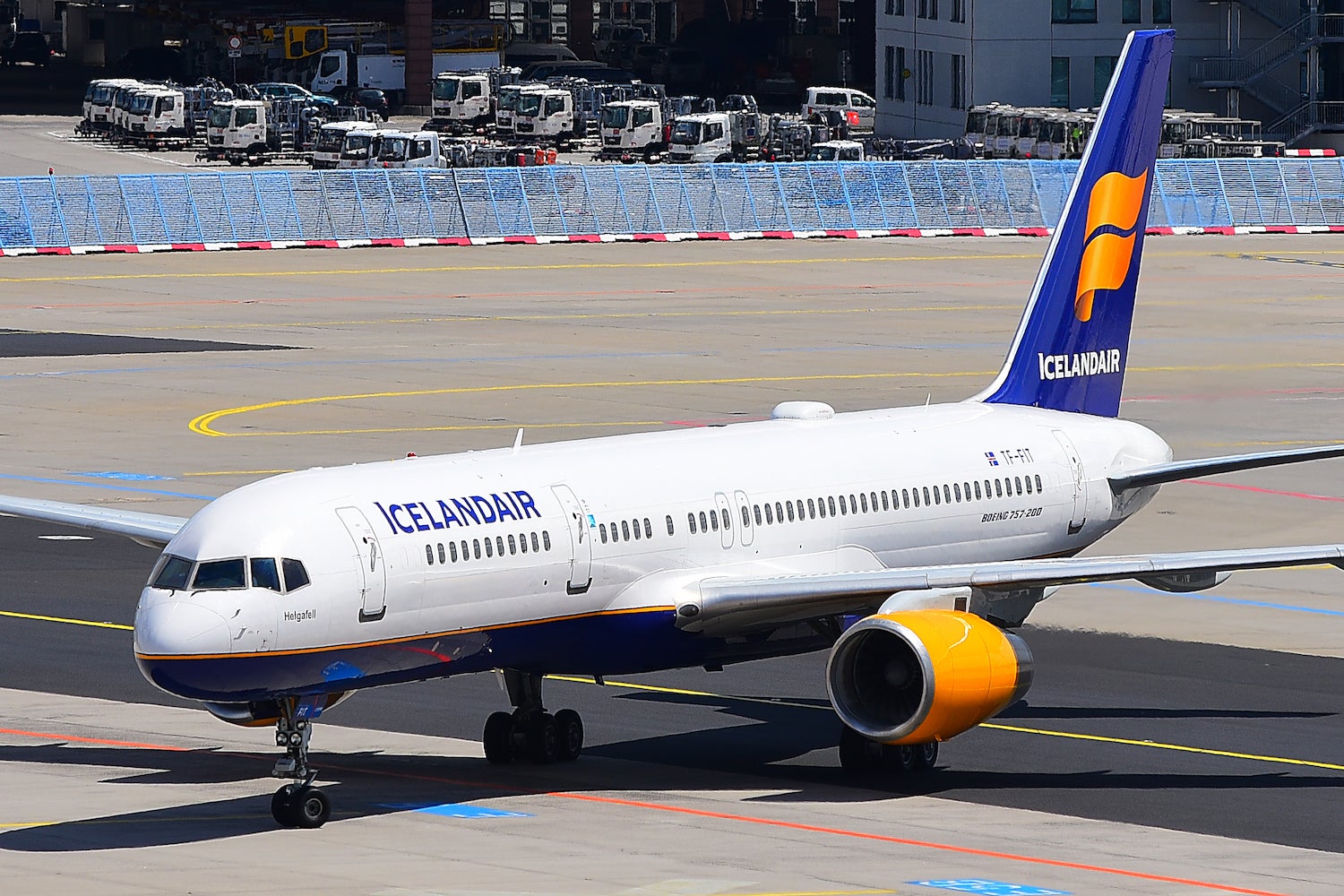
Icelandair's partners
Although Icelandair isn't a part of any alliance, it does have a few airline partners, including Alaska Airlines and JetBlue . However, Icelandair's partnership with JetBlue only allows members of each airline's frequent-flyer program to earn miles on each other's flights. The only partner you can book Icelandair awards through is Alaska Airlines Mileage Plan . In the past, you could earn and redeem points through Finnair Plus , but that partnership ended in 2019.
Icelandair's frequent-flyer program, Saga Club, is not a transfer partner of any major credit card point programs — American Express Membership Rewards , Chase Ultimate Rewards , Citi ThankYou or Capital One .
Related: Review of Icelandair from Reykjavik to New York in economy
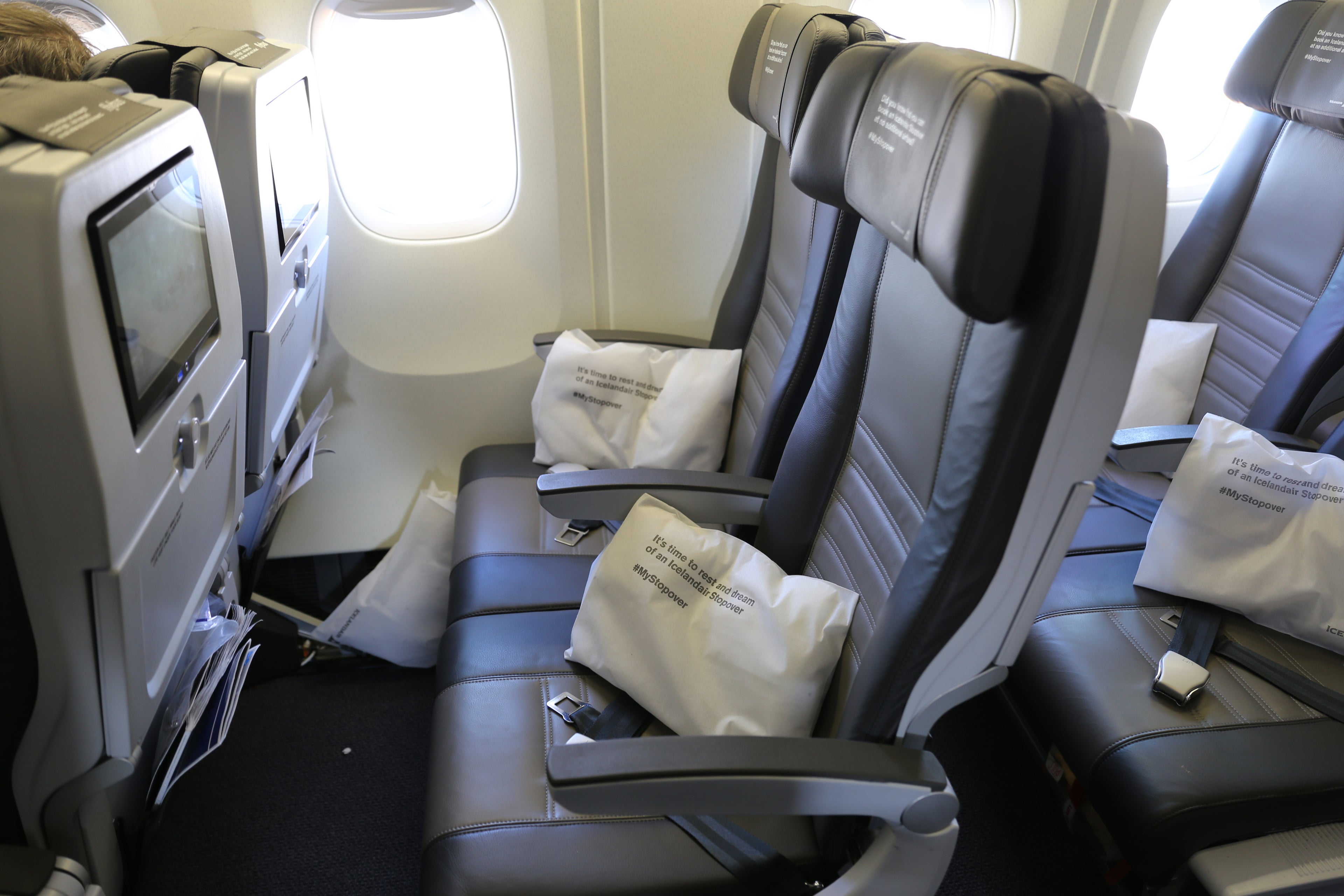
Icelandair Saga Club
The most obvious way to book Icelandair awards would be through its own frequent-flyer program, Saga Club. However, it's not useful unless you have a huge stash of points in the program. As previously mentioned, Icelandair doesn't partner with any transferable point programs , so it can be hard to accumulate enough Saga Club points for trips.
If you have been hoarding Saga Club points, though, the program uses dynamic award pricing, so redemptions are typically based on actual ticket prices. When redeeming points for Icelandair awards, you'll usually get about 0.46 cents of value per point, regardless of the cabin. For instance, a roundtrip economy light ticket from Chicago-O'Hare (ORD) to Reykjavik (KEF) would cost $566.47 in cash or 122,911 Saga points next May. In Saga Premium (business class), it would cost $1,751.47 or 380,028 points.
You can choose to either book your ticket entirely with points or a combination of points and cash. Unlike some other frequent flyer programs, your points won't lose value if you use the points plus cash feature.
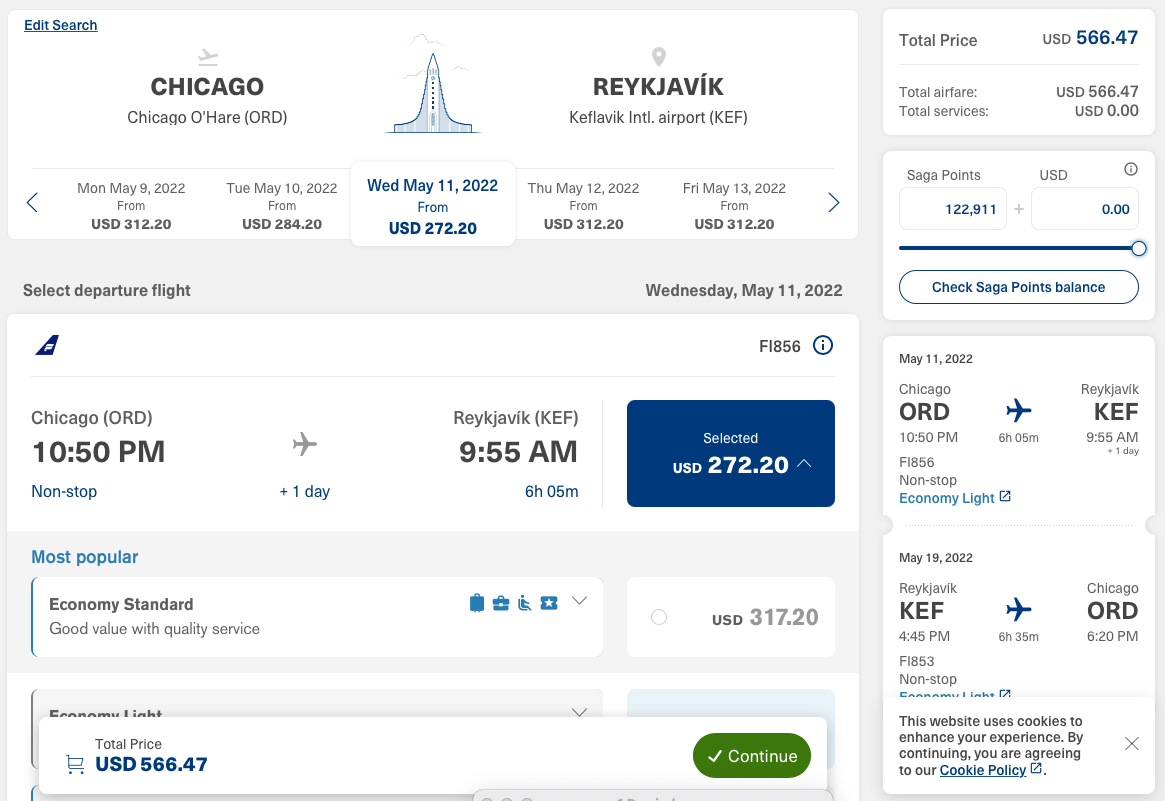
Given the fairly fixed value of the points, there aren't many tricks to maximize your returns. However, you may get greater value from your points by booking a cheap coach ticket with cash and then redeeming points for an upgrade. When booking an Economy Flex ticket, members can use points to upgrade to Saga Premium. The cost to upgrade on flights between North America and Iceland is a flat 53,000 points each way, which comes out to a reasonable $228 in value. Icelandair's business class is similar to a domestic first class-style recliner seat , but at that rate, the upgrade could still make a lot of sense.
Related: 4 reasons to fly Saga Class on Icelandair's new Boeing 737 MAX over the larger 767
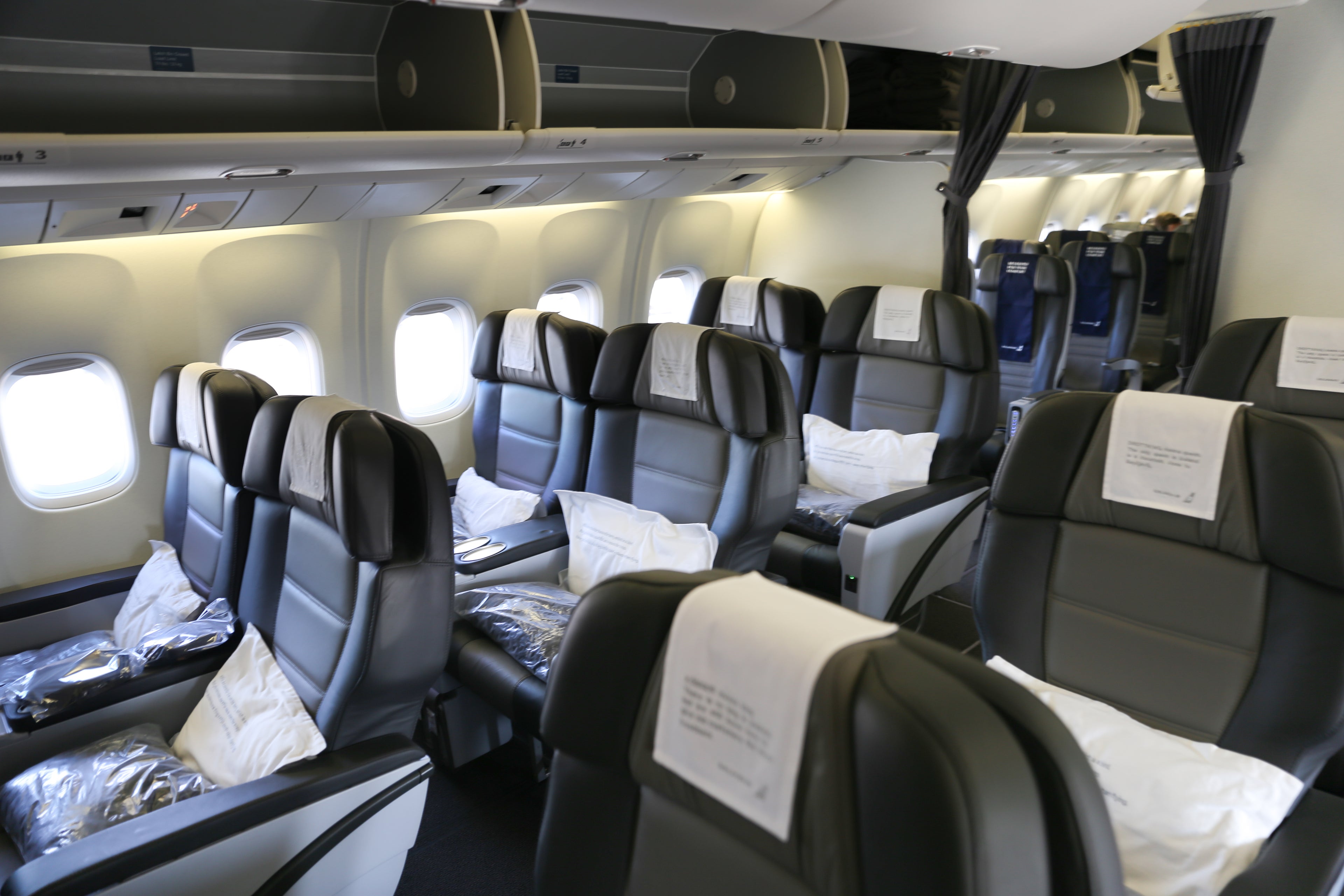
Alaska Airlines Mileage Plan
Thankfully, Icelandair awards are easily bookable through Alaska Airline Mileage Plan , too. You can search for availability and book Icelandair awards right on Alaska's website.
Alaska's award chart for Icelandair is broken down into two sections — flights between the contiguous U.S. and Alaska to Europe, and flights from the U.S. to Iceland.
Related: How to redeem miles with the Alaska Airlines Mileage Plan program
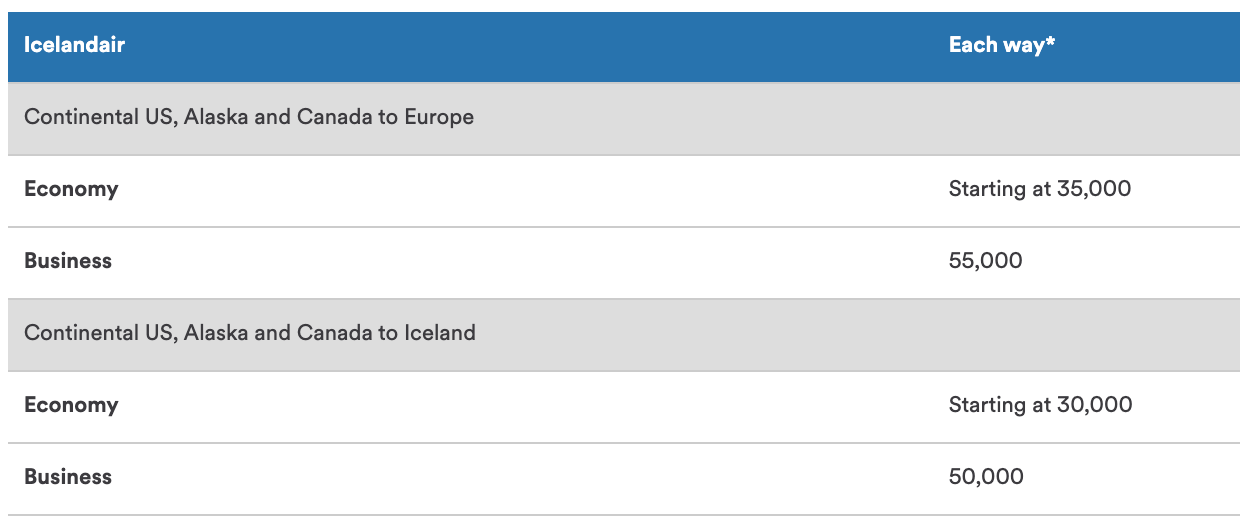
At first glance, redemption rates may appear much more reasonable than through Saga Club. However, you need to remember that Alaska miles are worth much more. Based on TPG valuations , Alaska miles are worth a whopping 1.8 cents apiece, so you'll be paying at least $540 in value for a one-way ticket.
Also, Alaska charges pretty hefty surcharges on Icelandair flights, even in coach. Fees will range from $200-$300 on a round-trip itinerary.

You could squeeze some more value out of your miles by taking advantage of Alaska's stopover rules . And if you're short on Alaska miles, you can easily boost your balance with the Alaska Airlines Visa® credit card or by transferring points from Marriott Bonvoy . However, It's probably best to save your Alaska miles for a different trip, such as a business- or first-class redemption on Cathay Pacific to Asia or another partner, where you'll likely get a better experience and way more value.
Chase Ultimate Rewards travel portal
With fees being quite high on this redemption and cash fares often pretty low, the best option may be simply to redeem your points at a fixed value through your credit card's travel portal .
Many credit cards allow you to redeem your points for one cent apiece toward travel. However, if you have the Chase Sapphire Preferred Card or Chase Sapphire Reserve card, you can redeem Ultimate Rewards points through Chase's travel portal at a rate of 1.25 or 1.5 cents each, respectively.
Icelandair often has deals from cities like Newark (EWR), Boston (BOS), Washington, D.C. (IAD) and Chicago (ORD) to Reykjavik (KEF) available for as low as $375 round-trip. When booking through Chase with the Chase Sapphire Reserve, these flights would cost just under 25,000 points.

Since these bookings are processed the same as a paid booking, you'll typically still earn airline miles when booking airfare through a travel portal. Travelers based in the U.S. will likely want to credit their flights to Alaska Airlines Mileage Plan or JetBlue TrueBlue.
Related: How to use the Chase Ultimate Rewards Travel Portal
Bottom line
Booking Icelandair flights with points and miles is pretty simple, mainly because there are only three real options. You can book with Icelandair Saga points, book with Alaska miles or go through a bank's travel portal. Since Icelandair consistently offers cheap fares to Iceland and Europe , booking through the Chase travel portal may be your best bet — just make sure you do the math.
If you don't have a Chase card, you can consider booking through the Citi ThankYou Rewards portal or another bank portal. Tickets purchased this way will still earn miles, making the value proposition of this method slightly higher. Just remember that you may get more value out of your points by transferring them to partners and booking premium cabin awards.
Visit TPG's Iceland destination hub for more stories about traveling to this island nation.
Additional reporting by Brendan Dorsey.
Updated 1/18/23
- Alaska Tourism
- Alaska Hotels
- Alaska Bed and Breakfast
- Alaska Vacation Rentals
- Flights to Alaska
- Alaska Restaurants
- Things to Do in Alaska
- Alaska Travel Forum
- Alaska Photos
- All Alaska Hotels
- Alaska Hotel Deals
- Last Minute Hotels in Alaska
- Things to Do
- Restaurants
- Vacation Rentals
- Travel Stories
- Rental Cars
- Add a Place
- Travel Forum
- Travelers' Choice
- Help Center
Glacier experiences in Alaska vs. Iceland - Alaska Forum
- United States
- Alaska (AK)
Glacier experiences in Alaska vs. Iceland
- United States Forums
- Europe Forums
- Canada Forums
- Asia Forums
- Central America Forums
- Africa Forums
- Caribbean Forums
- Mexico Forums
- South Pacific Forums
- South America Forums
- Middle East Forums
- Honeymoons and Romance
- Business Travel
- Train Travel
- Traveling With Disabilities
- Tripadvisor Support
- Solo Travel
- Bargain Travel
- Timeshares / Vacation Rentals
- United States forums
- Alaska forum

Seward cruises generally have a better chance of seeing more wildlife than the Whittier cruises .
Whittier cruises are on calm waters with a money-back guarantee against seasickness, while Seward cruises have to go into open ocean for a short time to get to the tidewater (calving) glaciers and that can often be choppy waters.
Thank you so much!

Thank you for the reassuring reply :-)

We hiked glacier in Iceland and suspect the FIRST time will also be the most memorable...true of lots of things like seeing your first moose up close...
Thanks kansasrod. Which glacier was that ? I am trying to get a sense of any differences between the ones the longer tours visit.
This topic has been closed to new posts due to inactivity.
- Alaska cruise NCL - shore excursions 6:34 am
- rental car price changed unexpectedly 3:34 am
- Clothing Requirement 1:53 am
- Matanuska Glacier Tour with 9-Year Old 10:37 pm
- Dumb question…aurora borealis 10:00 pm
- Possibly stopping in Sitka on a cruise 9:57 pm
- 2 days in:around anchorage before cruise 9:34 pm
- Anchorage to Talkeetna 8:31 pm
- Solo Aurora trip, end of 2024 yesterday
- Alaska Itinerary Advice and Questions 8/8-8/24 yesterday
- Anchorage 1 day logistics yesterday
- 8 day post small ship drive yesterday
- Picking a month for a cruise yesterday
- Salons May 09, 2024
- "TOP 10" Recommended Things to See & Do in Alaska 7 replies
- Best way to see Alaska 5 replies
- Alaska cruise - best choice cruise line 10 replies
- Train to Alaska from Vancouver 3 replies
- Alaska in August... WHat to expect 7 replies
- Holland america vs Princess Cruise 16 replies
- Bear Lodge in Fairbanks 10 replies
- Estimated Drive Times - are these accurate? 5 replies
- Cell Phone Coverage 16 replies
- Best time of year for Whales & Bears 3 replies
Alaska Hotels and Places to Stay
- Why KEEP ALL QUESTIONS in 1 original thread?
- Why post SPECIFICS about your question initially?
- RESOURCES for planning a trip?
- Why study a MAP of Alaska?
- Weather and sunrise/sunset?
- Which rental companies offer one way car rentals?
- BEAR viewing trips?
- Coupon books?
- FISHING in Alaska?
- CLOTHES for summer travel?
- Renting an RV in Alaska?
- Web cameras for Alaska?
- Car camping in Alaska?
- Trip Reports 2020
- Self-serve laundromats?
- Free wifi in Alaska?
- Panning for gold ?
- Seeing NORTHERN LIGHTS?
- Mileage and travel times?
- Scenic drives?
- Alaska by TRAIN: Alaska Railroad?
- BEAR SAFETY in Alaska?
- Where can I go bear viewing by boat?
- TRIP REPORTS 2020
- TRIP REPORTS 2019
- Trip Reports for previous years
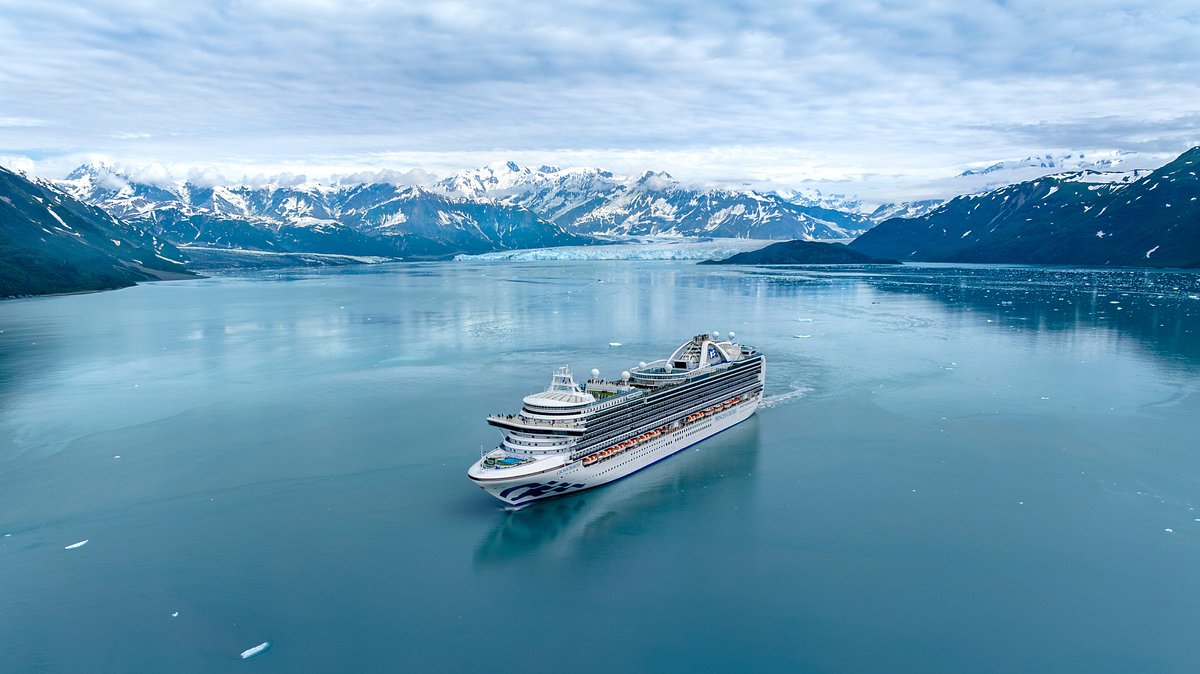

Canada or Alaska? Which natural wonderland should you travel to?
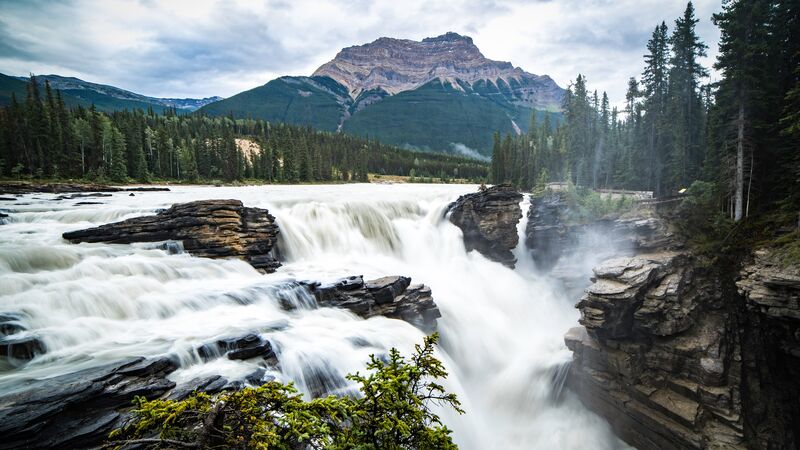
Don’t leave your next holiday to chance. Read this blog instead.
Whether you’re looking for a wintry escape or you just want to marvel in awe at some of Mother Nature’s best work when the sun’s out, you can’t go wrong with Canada or Alaska (in the United States ). But what happens when you have to choose between the two?
Canada might have the Canadian Rockies and cool cities like Toronto and Vancouver, but Alaska has untouched wilderness and fascinating animals. To help you make this almost impossible decision a little easier, we’ve put together a guide comparing the landscapes, cities, animals, and national parks of both destinations so you don’t have to spend hours crawling the internet.
The aim is that when you come to the end, you’ll know exactly which place you want to pick – at least, fingers crossed.
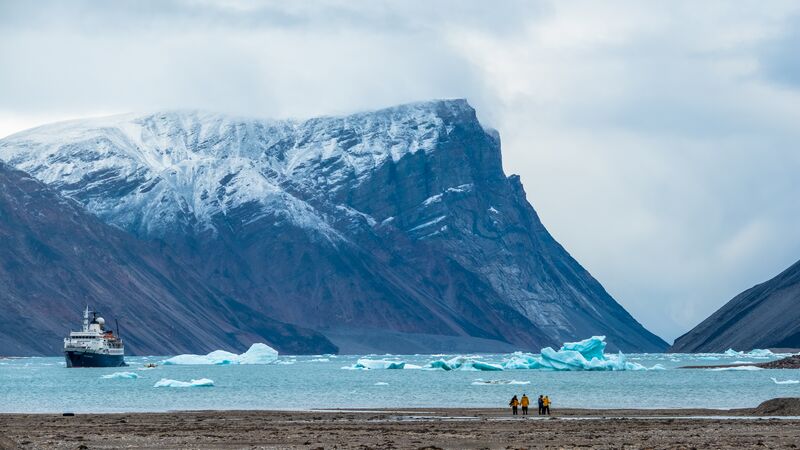
Due to Canada’s large size (huge doesn’t even begin to describe it), the landscapes vary quite a bit depending on where in Canada you’re spending time in, but you can expect to see lots of mountains, lush forests, and woodland areas pretty much everywhere you go.
We’ve already touched on the breathtaking natural wonder that is the Canadian Rockies region, but Canada has so much more beauty to offer with Niagara Falls, Moraine Lake (in Alberta), and Baffin Island on the list of places you need to experience to during your visit.
JOIN OUR BEST OF THE CANADIAN MARITIMES SMALL GROUP ADVENTURE
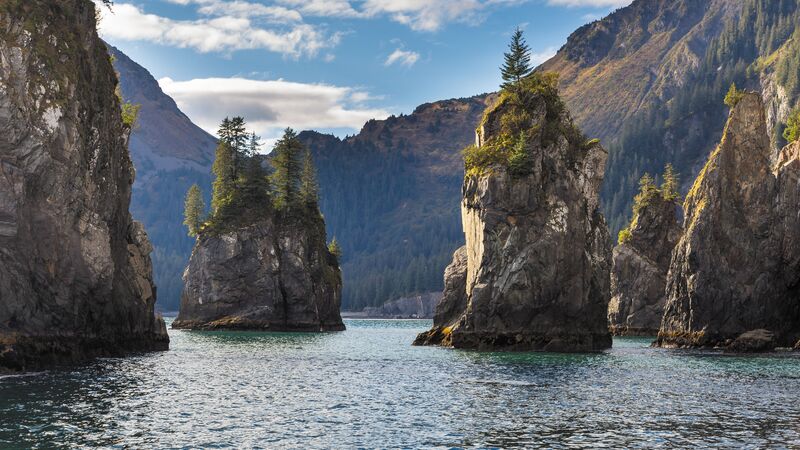
Rugged and often snow-capped mountain ranges are what characterize the landscapes of Alaska with the Brooks Range, the Aleutian Range, and the Alaska Range (which includes everyone’s favourite peak, Denali) all promising spectacular alpine views.
If you’ve seen enough mountains to last you a lifetime (unlikely but it could happen), there are plenty of other awe-inspiring things to look at and places to visit including the Arctic Coastal Plain, Bristol Bay, Glacier Bay, Harding Ice Field, and Kenai Peninsula – think protected wildlands, state parks, fascinating fjords, and the possibility of catching the Northern Lights.
EMBARK ON OUR HIKING IN KENAI FJORDS NATIONAL PARK TOUR
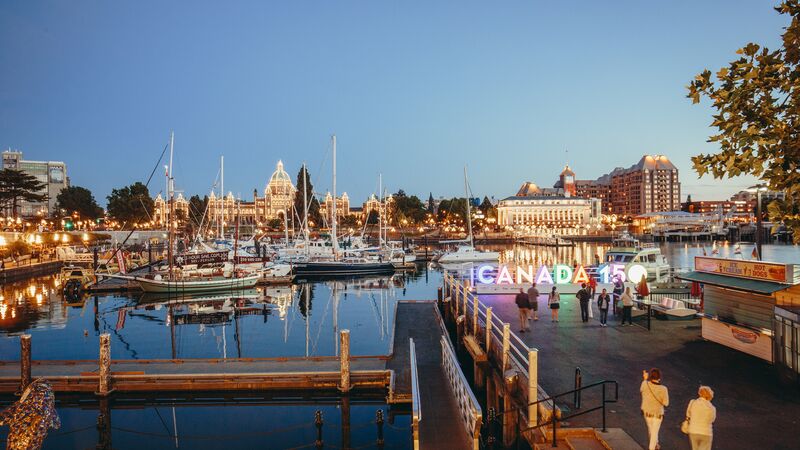
Whether you want to walk down crowded streets in cosmopolitan cities or slowly wander around smaller towns that are big on charm, Canada has the best of both. Turn your holiday up a notch in Toronto with its multicultural feel, stylish neighbourhoods, and iconic landmarks (CN Tower, we’re looking at you).
If laidback is more your vibe, then Banff is one for the itinerary thanks to its hot springs, winter activities, and stunning scenery. So too is Lunenberg in Nova Scotia with its unique architecture, cosy restaurants, and UNESCO World Heritage listing. Special mention also goes to Victoria in British Columbia, Calgary in Alberta, Montreal in Quebec, and Ottawa in Ontario.
RELATED: WHY WINTER IS THE PERFECT TIME TO VISIT CANADA
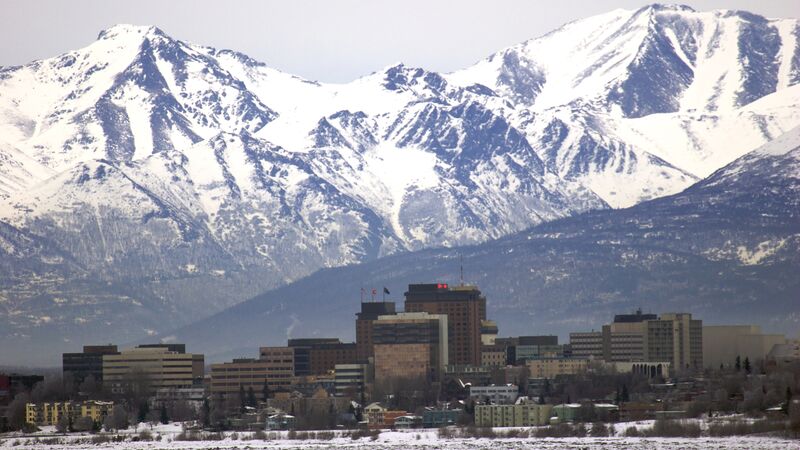
Understated but no less vibrant and lively, the cities of Alaska will undoubtedly give Canada’s concrete jungles a run for their money. While they might not be as internationally known, the likes of Juneau (Alaska’s capital city) and Anchorage (the state’s largest city) still have plenty of exciting things to offer including captivating museums and cultural centres, trendy restaurants full of fresh produce, and plenty of watering holes when you’re in need of a little hydration.
Even its small towns pack a big, charming punch with the likes of Kodiak, Petersburg, and Sitka all stealing traveller’s hearts and refusing to give them back. So, you can be assured that when you need a break from all the lush greenery and mountain scenery (who doesn’t love a good rhyme?!), Alaska’s animated metropolises will keep you fully – and happily – occupied.
RELATED: EVERYTHING YOU NEED TO KNOW ABOUT TRAVEL IN ALASKA
National Parks
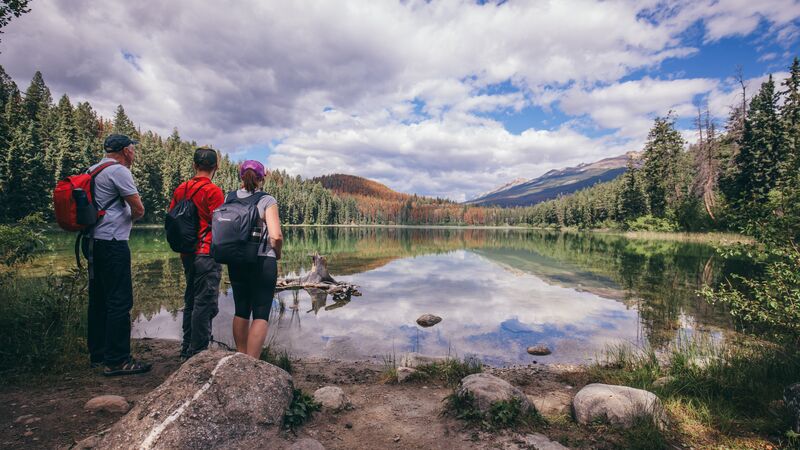
It’s probably safe to assume that if you’re considering a holiday to either Canada or Alaska, national parks will play a huge role in your final itinerary. In fact, there are 46 national parks in Canada alone – all with their own spectacular scenery – and while it might be hard to get to each and every one of them during your travels, you can definitely tackle the major ones.
Topping the list of ‘national parks you simply have to see’ is Banff. Featuring sites like Lake Louise (a picture-perfect turquoise lake that’s graced magazine covers and postcards the world over), the Basin National Historic Site, and the Banff Upper Hot Springs, you might never want to leave.
JOURNEY THROUGH CANADA’S NATIONAL PARKS ON OUR CANADIAN ROCKIES TOUR
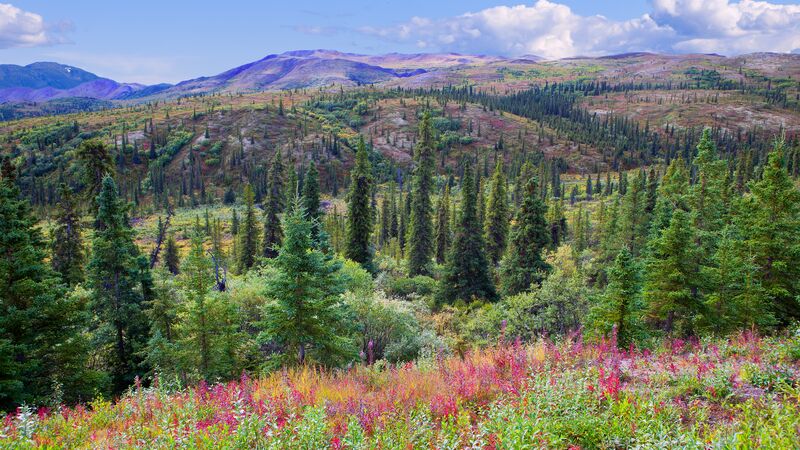
When it comes to Alaskan national parks, it’s more quality over quantity but if this northwest state knows how to do anything right, it’s big expanses of wilderness filled with awe-inspiring natural wonders. From the Bering Land Bridge National Preserve with its remoteness and rich history to Denali National Park with its impressive peak and legendary wildlife, it’s easy to spend your entire trip in the great outdoors.
HIKE IN DENALI NATIONAL PARK ON A SMALL GROUP TOUR
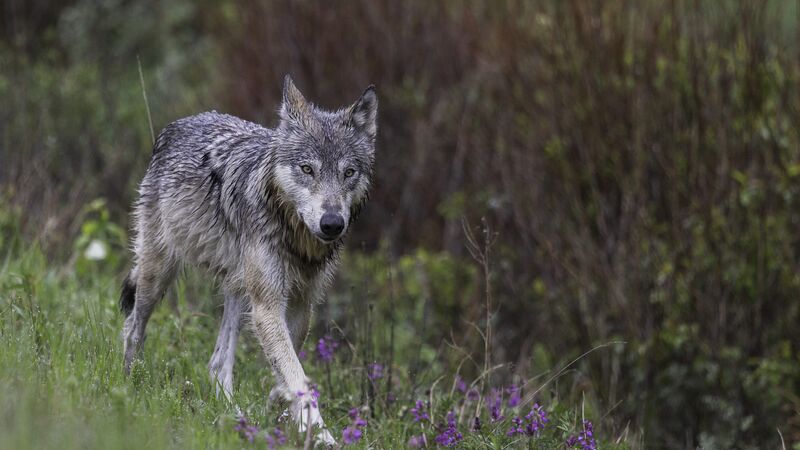
Narwhals, wolves, and polar bears – oh my! These animals are just a small selection of the incredibly diverse wildlife that can be spotted around Canada from the Northwest Passage in Nunavut to Churchill in Manitoba. This country’s many national parks are also great for black and grizzly bear spotting, especially when they come out of hibernation during the warmer months.
Some other notable animals you’ll likely see out and about during your travels are elk, moose, mountain goats, caribou, beluga whales, bison, and walruses. In fact, you’ll probably see so many different species that it’d be worth starting your own Canadian animal bingo card.
RELATED: 8 INCREDIBLE ANIMALS YOU’LL FIND IN CANADA
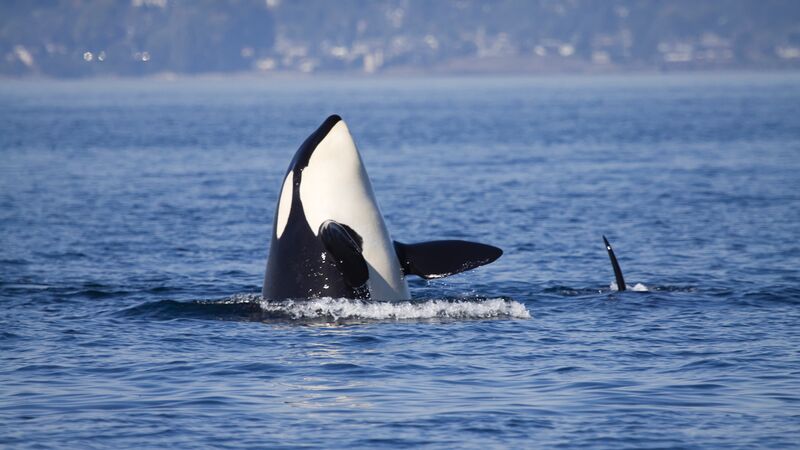
With massive plains of untamed wilderness, it makes sense that Alaska is crawling with interesting animals you don’t even have to search for – seriously, they’re everywhere. From the symbolic bald eagle soaring the skies above Denali National Park to the powerful grizzly bear lumbering through the brush of Fjords National Park, spotting Alaska’s wildlife is easier than you think.
The same goes for the animals who live below the sea’s surface with humpback whales, orcas, and sea otters all gracing the waters around Seward, Resurrection Bay, and Prince William Sound (among other destinations). If you want to get as close to these magical sea creatures as you can opt for one of several whale-watching tours in each region (your camera roll will thank you for it).
RELATED: THE TOP 5 NATIONAL PARKS IN ALASKA
The verdict
It can be hard to separate both Canada and Alaska sometimes…so we’re not even going to try. With their enchanting landscapes (to be enjoyed in summer and winter), bustling cities and quaint towns, outstanding national parks, and native animals, it’s too hard to call a winner. So, this destination comparison is a draw.
Feeling inspired?
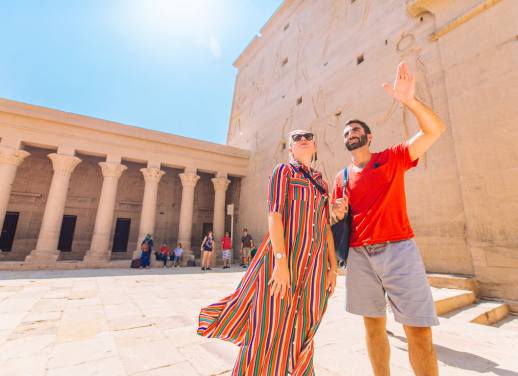
Kate Gazzard
When I was 11, my parents asked me whether I wanted a pool for the house or a trip to Fiji. I chose Fiji, and I've made travelling as much as I can a priority ever since.
You might also like
5 places to escape the crowds in italy..., is australia safe everything you need to know, 10 fun facts you might not know about..., exploring the world through tea, 12 facts you probably don’t know about guatemala, the 7 best places to go on a..., 10 surprising facts about ethiopia, 5 reasons to visit sri lanka in the..., why 2024 is the best year to see..., yellowstone vs yosemite: which national park to visit, 6 unique experiences you can have in el....

IMAGES
VIDEO
COMMENTS
Understanding the cost is an important part of planning your travel. While both Iceland and Alaska offer experiences of a lifetime, their costs can vary. Iceland is known for being on the pricier side. Accommodation, eating out, and popular activities like glacier tours or whale watching can add up. For instance, a meal at an inexpensive ...
Alaska is popular for its fresh seafood, while Iceland is famous for uniquely Icelandic delicacies like fermented shark and Skyr, a traditional Icelandic dairy product. Explore the natural beauty and rich cultures of Alaska and Iceland in this intriguing comparison piece. Discover Iceland's unique geysers, ice caves, and Viking heritage, versus ...
Everyone has different expectations and appreciations. Having been to Iceland twice and Alaska 14 times, I can only give my opinion: Iceland is a very interesting country, with its geothermal features, lovely waterfalls, geysers, and unusual scenery, however I never think of it as being particularly scenic. Alaska with its beautiful mountain ranges, wildlife, glaciers, is a whole different ...
Majority of Iceland is not reachable in the winter. You'll get pretty similar stuff with Alaska vs Iceland, the one caveat is you won't see Bear or Moose in Iceland. Alaska is not cheap. I actually felt like Iceland is on the smaller side, a pretty significant amount of the sites are a few hours from Reykavik.
3 posts. 13 reviews. 12 helpful votes. Bucket List Alaska or Iceland Need Advice. 9 years ago. My mother is getting to her 70's and one of her life long dreams was to go see the glaciers. She has always thought Alaska was the only place to see them however, I know Iceland offers sites as well. We have to go this July because it is the only time ...
1. I live in Alaska and if you are into the outdoors, it's amazing in the summer. I love the mountains and trails and the summer non stop daylight. But personally, I would choose Iceland. Looks like a nature lovers paradise also, plus a different culture. I can't wait to go to Iceland one day!
Cost-wise, I saw $2100 for 3 people for the United flight SFO to ANC roundtrip; $2500 for 2 adults and one child to Iceland on Icelandair. Travel with small children is never simple, but my grandchildren have been to Europe several times before the age of three, and managed just fine. (And so did their parents).
Travel time. Where I'm at on the east coast, Alaska is 10 hours away, where Iceland is 7 hours. Add in a connection for Alaska, and Iceland is the winner for more convenient. Also, different feedback on Iceland. Some of my friends said they loved Iceland and they were "Down with the brown" lol , but another said they were super racist.
For Icelandair flights, you are pretty much limited to using Alaska Airline Mileage Plan miles as your only redemption option (unless you have miles in Icelandair's own Saga Club loyalty program). Flights are priced one-way and cost 30,000 miles in economy and 50,000 miles in business class (Saga class).
5. The Azores. Who Called it the New Iceland: Travel + Leisure, Conde Nast Traveler, Bloomberg. Why Go There: An archipelago about 1,000 miles off the coast of Portugal, the Azores' dramatic ...
Is Alaska, United States bigger than Iceland? Yes, Alaska is bigger than Iceland. Alaska has an area of 1,723,337 km 2 (4,463,443 miles 2) and Iceland has an area of 100,250 km 2 (259,648 miles 2 ) which means that Alaska is 1,623,087 km 2 (4,203,795 miles 2) bigger than Iceland. That makes Alaska 17 times bigger than Iceland.
This requires more planning, but you'll have a more richly rewarding vacation. Here are five tips to see the real Alaska: 1. If You Cruise, Make It A Means to an End. Cruises are a great way to see Alaska's coastal mountains, glaciers, marine wildlife, and towns. But you don't want to miss our highest mountains, "Big Five" land ...
Go to Alaska, because the weather in Iceland is very unreliable. Sure it may be dark and there may be northern lights but there's a high chance of heavy cloud or worse (rain storms, etc). Most of Alaska has a more stable winter climate - colder and clear. You really are beholden to the weather, wherever you are.
Fairbanks, Alaska. Fairbanks has an average of 240 light shows each year. The Northern Lights have been seen in some unbelievable places, including Mexico and New Orleans, but Fairbanks is your best bet. It is in the middle of the Arctic viewing circle. Farther north or south, and the number of nights decreases by more than half—Fairbanks is ...
Iceland is a lot about moving around a lot, staying in a different place every night, etc, which is a huge hassle with small children. In Alaska, it's much easier to choose a couple bases and spend several nights at each. Plus it's less time on a plane and a smaller time zone adjustment, which is always preferable with small kids.
Weather & Climate - Iceland vs. Greenland. While both Iceland and Greenland have cold climates typical of northern latitudes, Iceland is generally milder and more temperate, especially in its coastal regions. Winters in Reykjavik, the capital, are relatively mild, and the summers are cool.
For volcanic and otherworldly landscapes, Iceland is your best bet. For mountains and fjords, look to Norway. Something else to bear in mind is that the coastline of Norway is more accessible than ...
Booking Icelandair flights with points and miles is pretty simple, mainly because there are only three real options. You can book with Icelandair Saga points, book with Alaska miles or go through a bank's travel portal. Since Icelandair consistently offers cheap fares to Iceland and Europe, booking through the Chase travel portal may be your ...
Glacier experiences in Alaska vs. Iceland. We are in early stages of planning an Alaska tour in 2022, likely for 2 weeks. At this point, trying to decide on the types of activities (hence the places) to go. Glaciers and different glacier-related experiences are one thing that is common with another place we visited and loved -- Iceland.
Canada and Alaska are gigantic. Alaska is 14 times the size of Iceland and 5 times larger than Norway. Canada, even the parts you've already narrowed it down to in comments, is even bigger. I don't know if there's a slice of Canada or Alaska more scenic or not but generalizing doesn't help. 1.
National Parks. Jasper National Park, Canada. It's probably safe to assume that if you're considering a holiday to either Canada or Alaska, national parks will play a huge role in your final itinerary. In fact, there are 46 national parks in Canada alone - all with their own spectacular scenery - and while it might be hard to get to ...
👋 Welcome to 5 Things PM! A giant pollution-sucking vacuum just started operating in Iceland. The direct air capture plant, dubbed "Mammoth," takes in air and uses chemicals to strip out ...
Norway has a lot more infrastructure, a lot more smaller towns and villages, and a lot more public transport. It still has some pretty amazing scenery, and that scenery is in many ways less hard work. Iceland is very rough landscape a lot of the time. It depends a lot on whether you want extreme wild landscape, and all that comes with it, or ...
Iceland is definitely a special place. The landscape there feels part surreal and part sci-fi movie. I've been a lot of places and I've only had that kind of feeling in Iceland and in New Zealand. Two places that couldn't be geographically further apart, with a lot of similarities. With that said, I can't choose a location as most stunning.